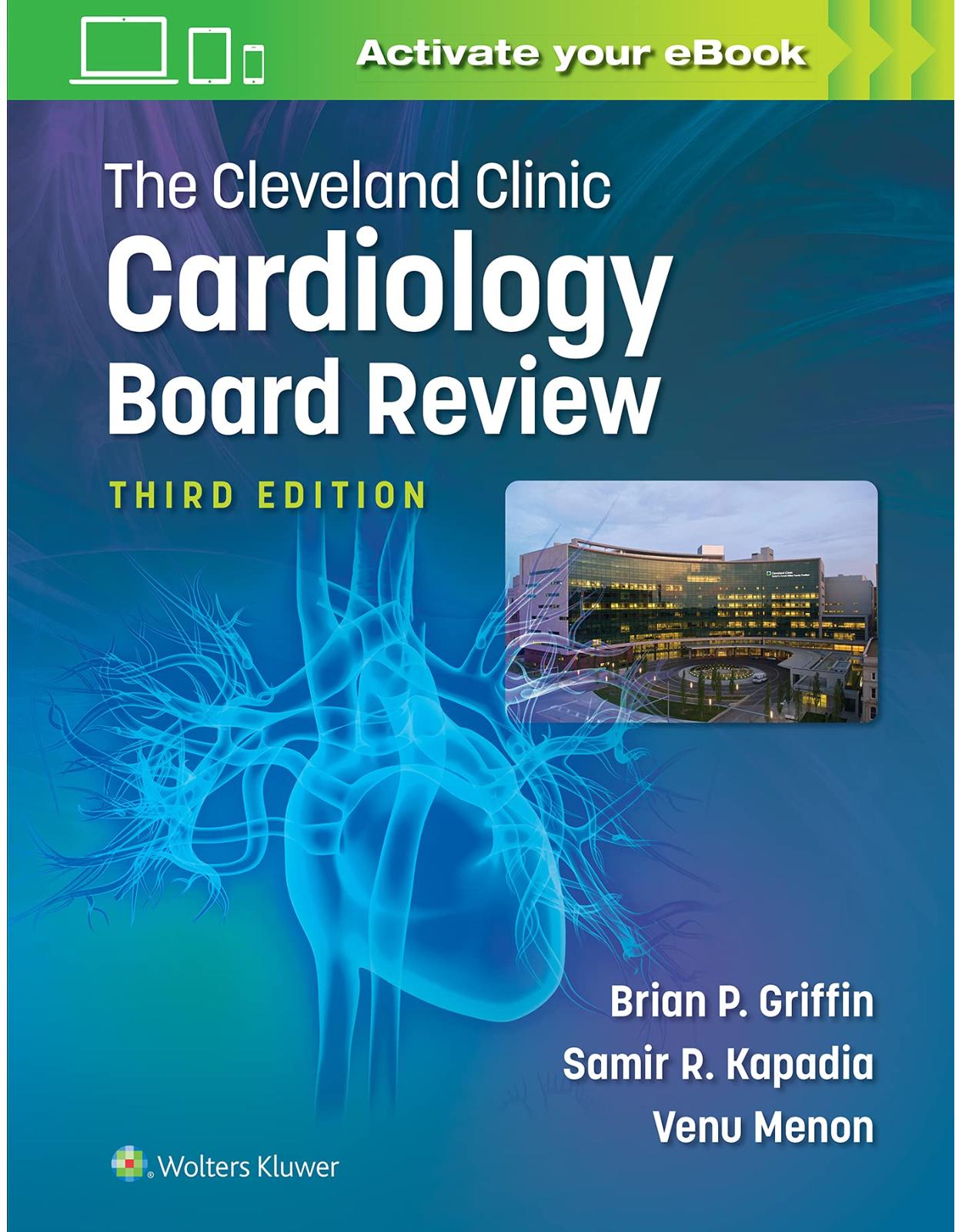
The Cleveland Clinic Cardiology Board Review Third Edition
Livrare gratis la comenzi peste 500 RON. Pentru celelalte comenzi livrarea este 20 RON.
Disponibilitate: La comanda in 3-4 saptamani
Editura: LWW
Limba: Engleza
Nr. pagini: 950
Coperta: Paperback
Dimensiuni: 20.96 x 3.18 x 27.31 cm
An aparitie: 01/01/2022
Description:
Providing a comprehensive, state-of-the-art review of every area of contemporary cardiovascular medicine, The Cleveland Clinic Cardiology Review is an excellent tool for learning and reviewing key concepts in major areas of cardiology. The ThirdEdition contains fully revised content, review questions used on the board exam. A new, easy-to-follow chapter template facilitates quick review and retention of the material.
Table of Contents:
I: FUNDAMENTALS
1 How to Pass the Cardiovascular Disease Board Examination
GENERAL INFORMATION
FORMAT
HOW YOU ARE SCORED
TIPS
TEN PITFALLS TO AVOID
2 Cardiac Physical Examination
INTRODUCTION TO PHYSICAL EXAMINATION
INSPECTION
ARTERIAL PULSE
Basic Principles
Disease States
Pulsus Alternans
Pulsus Paradoxus
Double-Peaked Pulse
Pulsus Tardus and Parvus
Anacrotic Pulse
Dicrotic Pulse
Osler Sign or Maneuver
Pulse Deficit
Radial-to-Femoral Delay
Pressure/Pulse Difference in Two Arms (>10 mm Hg Systolic)
Hill Sign
Mayne Sign
Traube Sign “Pistol Shot”
Corrigan Pulse: “Water-Hammer” Pulse
Duroziez Sign
JUGULAR VENOUS PULSE
Basic Principles
Jugular Venous Pressure
Jugular Venous Waveforms
Disease States
Other Miscellaneous Signs/Findings
PRECORDIAL MOTION
Basic Principles
Hypertrophy
Dilation
Disease States
FIRST HEART SOUND
Basic Principles
Intensity
Splitting
SECOND HEART SOUND
Basic Principles
Intensity
Single S2
Splitting
THIRD HEART SOUND
Basic Principles
FOURTH HEART SOUND
Basic Principles
EXTRA HEART SOUNDS
Diastole
Systole
Prosthetic Heart Sounds
Pacemaker Sounds
HEART MURMURS
Basic Principles
SYSTOLIC MURMURS
Systolic Murmurs: Ejection Type
Systolic Murmurs: Regurgitant Type
DIASTOLIC MURMURS
Mitral Stenosis
Aortic Regurgitation
Pulmonic Regurgitation
Tricuspid Stenosis
CONTINUOUS HEART SOUNDS
Patent Ductus Arteriosus
DYNAMIC AUSCULTATION
Respiration
Valsalva
Hemodynamic Maneuvers
Pharmacologic Agents
Post PVC
TYPICAL FINDINGS OF SPECIFIC MEDICAL CONDITIONS
Acute Myocardial Infarction
RV Infarction
Dilated Cardiomyopathy
Restrictive CM
Cardiac Tamponade
Constrictive Pericarditis
Pulmonary Hypertension
Type A Aortic Dissection
Atrial Septal Defect
Ventricular Septal Defect
Expected “Normal” Findings during Pregnancy
Chapter 2 Review Questions and Answers
3 Cardiac Anatomy
THE PERICARDIUM
CARDIAC CHAMBERS
Right Atrium
Right Ventricle
Left Atrium
Left Ventricle
CARDIAC VALVES
Tricuspid Valve
Pulmonic Valve
Mitral Valve
Aortic Valve
GREAT VESSELS
Vena Cavae
Pulmonary Arteries
Pulmonary Veins
The Aorta
Coronary Arteries
Cardiac Veins
Cardiac Lymphatic System
THE CONDUCTING SYSTEM
Chapter 3 Review Questions and Answers
4 Cardiovascular Physiology: Flow–Volume Loops
DETERMINANTS OF MYOCARDIAL PERFORMANCE
Preload
Afterload
Contractility
Heart Rate
Myocardial Performance
GRAPHIC ILLUSTRATION OF MYOCARDIAL PERFORMANCE
Starling Law and Frank–Starling Curves
Force–Tension Curves
Pressure–Volume Loops
INTERPRETING THE PRESSURE–VOLUME LOOP
Ventricular Volumes
Intracardiac Pressures
Compliance
Elastance and Contractility
Stroke Work
SUMMARY OF THE ACTIONS OF THE AUTONOMIC NERVOUS SYSTEM ON THE COMPONENTS OF MYOCARDIAL PERFORMANCE
VALVULAR HEART DISEASE AND PRESSURE–VOLUME LOOPS
CARDIOMYOPATHY AND PRESSURE–VOLUME LOOPS
Chapter 4 Review Questions and Answers
5 Basic Cardiac Electrophysiology
MEMBRANE ACTION POTENTIAL
Sodium-Dependent Cells
Levels of Na+ Channel Activity Regulation
Myocardial Tissues That Have Calcium-Dependent AP versus Tissues with Sodium Channels
ELECTRICAL COUPLING CELLS (GAP JUNCTION)
CONDUCTION SYSTEM ANATOMY AND PHYSIOLOGY
Chapter 5 Review Questions and Answers
6 Cardiac Biochemistry
CARDIAC CONTRACTILITY AND CALCIUM HOMEOSTASIS
β-Adrenergic Signaling
Ivabradine and the If Current
DIGITALIS AND THE NA+-K+ ATPASE
PHOSPHODIESTERASE INHIBITION
RENIN–ANGIOTENSIN SYSTEM AND NATRIURETIC PEPTIDE SYSTEM
NITRIC OXIDE
BIOCHEMISTRY OF INHERITED CARDIOMYOPATHIES
Chapter 6 Review Questions and Answers
7 Clinical Epidemiology and Biostatistics
CURRENT CONCEPTS AND ESSENTIAL FACTS
Types of Clinical Studies
Statistical Tests
Data Presentation and Reporting of Outcomes
Confounding and Interaction
Bias and Its Consequences
Causality and Validity
Chapter 7 Review Questions and Answers
II: CARDIOVASCULAR IMAGING AND STRESS TESTING
8 Chest Radiography for the Cardiovascular Medicine Boards
BASIC APPROACH AND PROJECTIONS
PULMONARY VASCULAR PATTERNS
Pulmonary Vascular Patterns in Normal and Various Cardiovascular Disease States
Pulmonary Edema Patterns
CARDIOMEDIASTINAL SILHOUETTE PATTERNS
Normal Landmarks
Normal Cardiac Silhouette
Normal Size
Pectus Excavatum
Pericardial Cyst
Aortic Stenosis
Pseudocoarctation
Coarctation
Valvar Pulmonic Stenosis
Mitral Stenosis
Mitral Regurgitation
CALCIFICATION PATTERNS
Cardiac
Paracardiac
Calcific Constrictive Pericarditis
Left Atrial Wall Calcification
Mitral Annular Calcification
Calcified Post-MI Left Ventricular True Aneurysm
Coronary Artery Calcification
Chapter 8 Review Questions and Answers
9 Doppler Echocardiography
BASIC PRINCIPLES OF ULTRASOUND
INTERACTION OF ULTRASOUND WITH TISSUE
TRANSDUCERS
IMAGING MODALITIES
HARMONIC IMAGING
THREE-DIMENSIONAL ECHOCARDIOGRAPHY
DOPPLER ECHOCARDIOGRAPHY
STRAIN IMAGING
IMAGING ARTIFACTS
PRINCIPLES OF FLOW
BASIC PRINCIPLES OF JETS
Chapter 9 Review Questions and Answers
10 Electrocardiographic Stress Testing
ESSENTIAL FACTS
ESSENTIAL EVIDENCE/CURRENT GUIDELINES
SAFETY
INDICATIONS AND CONTRAINDICATIONS TO EXERCISE ECG STRESS TESTING
METHODS OF TESTING
DIAGNOSTIC INTERPRETATION
PROGNOSTIC INTERPRETATION
EXERCISE ECG STRESS TESTING IN WOMEN
METABOLIC GAS-EXCHANGE ANALYSES
SUMMARY
Chapter 10 Review Questions and Answers
11 Stress Echocardiography
FORMS OF STRESS ECHOCARDIOGRAPHY
Exercise Echocardiography
Pharmacologic Stress Echocardiography
IMAGING TECHNIQUE
INTERPRETATION OF STRESS ECHO
USES FOR STRESS ECHOCARDIOGRAPHY
Diagnosis of CAD
Prognostic Role
Role of DSE to Assess Viability
Stress Echocardiography for Assessment of Diastolic Function
Stress Echo in Nonischemic Cardiac Conditions
CONCLUSIONS
Chapter 11 Review Questions and Answers
12 Nuclear Cardiac Imaging: A Primer
CARDIAC RADIOACTIVE TRACERS
SPECT Perfusion Agents
Technetium-99m-Labeled Agents
Thallium-201 Chloride
PET Tracers of Myocardial Perfusion
Rubidium-82
Nitrogen-13 Ammonia
Oyxgen-15 Water
PET Tracers of Myocardial Metabolism
Miscellaneous Cardiac Tracers
OVERVIEW OF NUCLEAR IMAGING
BASIC OF CARDIAC SPECT IMAGING
CARDIAC PET IMAGING
STRESS PROTOCOLS IN NUCLEAR PERFUSION IMAGING
INTERPRETATION OF MYOCARDIAL PERFUSION IMAGES
CLINICAL USE OF MYOCARDIAL PERFUSION IMAGING
PET MYOCARDIAL BLOOD FLOW QUANTIFICATION
PET METABOLIC IMAGING FOR MYOCARDIAL VIABILITY
NUCLEAR IMAGING IN ACUTE CHEST PAIN
NUCLEAR IMAGING POST-MI AND POSTREVASCULARIZATION
NUCLEAR IMAGING IN HEART FAILURE
SPECT Imaging in Cardiac Amyloidosis
PET Imaging in Cardiac Sarcoidosis
PET IMAGING IN INFECTIVE ENDOCARDITIS
RADIONUCLIDE VENTRICULOGRAPHY
SUMMARY
Chapter 12 Review Questions and Answers
13 Cardiac MRI and CT
CARDIAC MRI
Technical Considerations
Gadolinium-Based Contrast Media Agents
Selected Clinical Applications
Limitations of Cardiac MRI
CARDIAC CT
Indications
Technical Considerations
Selected Clinical Applications
Limitations of Cardiac CT
EVALUATION OF CARDIAC MASSES BY CT AND MRI
Chapter 13 Review Questions and Answers
III: CONGESTIVE HEART FAILURE AND CARDIOMYOPATHY
14 Pathophysiology of Heart Failure
EPIDEMIOLOGY OF HEART FAILURE SYNDROME
DEFINITION AND CLASSIFICATION OF HEART FAILURE SYNDROME
PATHOPHYSIOLOGIC MECHANISMS OF HEART FAILURE
Hemodynamics and Cardiac Output in Heart Failure
Pressure–Volume Loop Analysis in Heart Failure
ADAPTIVE MECHANISMS TO HEART FAILURE SYNDROME
Autonomic Nervous System Dysfunction
Renin–Angiotensin–Aldosterone System Dysfunction
Abnormal Cellular or Molecular Mechanisms
Ventricular Remodeling and Reverse Remodeling
Counterregulatory Systems (Natriuretic Peptides)
Inflammation and Oxidative Stress
Renal Retention of Salt and Water
Peripheral Vascular and Skeletal Muscle Adaptations in Heart Failure
SUMMARY
Chapter 14 Review Questions and Answers
15 Medical Treatment of Heart Failure
LIFESTYLE MEASURES
Sodium Restriction
Fluid Restriction
Exercise
Comorbid Conditions
MEDICAL THERAPY IN CHRONIC HEART FAILURE
Neurohormonal Blockade
Other Vasodilators
Digitalis Glycosides
Treatment of Related Conditions
MEDICAL THERAPY IN ACUTE DECOMPENSATED HEART FAILURE
Admission to Hospital
Invasive Hemodynamic Monitoring
Decongestion
Vasodilators
Inotropes
MEDICATIONS TO AVOID IN HEART FAILURE
Nonsteroidal Anti-inflammatory Drugs
Calcium Channel Blockers
Antiarrhythmic Medications
Oral Hypoglycemics
Chemotherapy Agents
MONITORING AND FOLLOW-UP
Disease Management Programs
Implantable Hemodynamic Monitors
Chapter 15 Review Questions and Answers
16 Heart Transplantation
ORGAN ALLOCATION
THE DONOR
THE RECIPIENT
POSTTRANSPLANT MANAGEMENT ISSUES
Rejection
Immunosuppressive Strategies
Immunosuppressant Agents
Calcineurin Inhibitors
Antiproliferative Agents
TOR Inhibitors
Corticosteroids
Combination Regimen
HEART TRANSPLANT COMPLICATIONS
Infection
Viral Infections
Fungal Infections
Protozoal Infections
Malignancies
Chronic Renal Dysfunction
Hypertension
Hyperlipidemia
Tricuspid Regurgitation
Osteoporosis
Survival
Chapter 16 Review Questions and Answers
17 Devices for Heart Failure
IMPORTANT CONSIDERATIONS REGARDING MECHANICAL CIRCULATORY SUPPORT DEVICES
TYPES OF MECHANICAL SUPPORT DEVICES
COMPONENTS AND CONFIGURATIONS OF MECHANICAL CIRCULATORY ASSIST DEVICES
PATIENT SELECTION
Age
Body Habitus
Renal Function
Pulmonary Function
Hepatic Function
Coagulation Abnormalities
Infectious Concerns
Arrhythmias
Pulmonary Hypertension
Right Ventricular Function
Anatomic Considerations
Nutritional Status
Neurologic Function
Malignancies
Psychiatric Conditions
Social Evaluation
ASSESSMENT OF OPERATIVE RISK
OUTCOMES AFTER CIRCULATORY SUPPORT IMPLANTATION
CLINICAL TRIALS OF DEVICE THERAPY
CONCLUSION
HOW TO PREPARE FOR THE BOARDS
Chapter 17 Review Questions and Answers
18 Myocarditis and Dilated Cardiomyopathy
MYOCARDITIS
EPIDEMIOLOGY AND CLASSIFICATION
ETIOLOGIES AND PATHOPHYSIOLOGY
CLINICAL PRESENTATION
EVALUATION
TREATMENT AND PROGNOSIS
SPECIFIC FORMS OF CARDIOMYOPATHY RELATED TO MYOCARDITIS
Chagas Heart Disease
Giant Cell Myocarditis
Hypersensitive/Eosinophilic Myocarditis
Dilated Cardiomyopathy
Inherited Forms of Dilated Cardiomyopathy
IMMUNE CHECKPOINT INHIBITOR–RELATED MYOCARDITIS
Chapter 18 Review Questions and Answers
19 Pulmonary Hypertension
DEFINITION AND CLASSIFICATION
Pulmonary Arterial Hypertension
Pulmonary Hypertension Owing to Left Heart Disease
Pulmonary Hypertension Owing to Lung Diseases and/or Hypoxia
Chronic Thromboembolic Pulmonary Hypertension and Other Pulmonary Artery Obstructions
Pulmonary Hypertension with Unclear or Multifactorial Mechanisms
PATHOPHYSIOLOGY
Prostacyclin and Thromboxane A2
Endothelin-1
Nitric Oxide
Other Vascular Effectors
Hemodynamic Consequences
DIAGNOSIS AND EVALUATION
Clinical Evaluation
Echocardiography
Other (Imaging) Studies
Hemodynamic Evaluation
PROGNOSIS
TREATMENT
General Measures
Pulmonary Vasodilators
Prostacyclin Pathway
Endothelin Pathway
Nitric Oxide Pathway
COMBINATION THERAPY
SURGICAL THERAPIES
FUTURE DIRECTIONS OF PH CLINICAL TRIALS:
Chapter 19 Review Questions and Answers
20 Heart Failure with Preserved Ejection Fraction
PHYSIOLOGY OF DIASTOLE
PHASES OF DIASTOLE
Isovolumic Relaxation Phase
Rapid Filling Phase
Diastasis (Slow Filling) Phase
Atrial Systole Phase
DETERMINANTS OF DIASTOLIC FUNCTION
CLINICAL PRESENTATION
PHYSICAL EXAMINATION
LABORATORY EXAMINATION
ECG
Radiography
Echocardiography
PROGNOSIS
TREATMENT OF DIASTOLIC HEART FAILURE
RESTRICTIVE CARDIOMYOPATHIES
Primary Restrictive Cardiomyopathies
Secondary Restrictive Cardiomyopathies
Chapter 20 Review Questions and Answers
21 Hypertrophic Cardiomyopathy
PREVALENCE AND DEFINITION
CLASSIFICATION
PATHOPHYSIOLOGY AND HISTOLOGY
SYMPTOMS AND CLINICAL COURSE
PHYSICAL EXAMINATION
DIAGNOSTIC TESTING
Labs, Chest X-Ray, and Electrocardiogram
Echocardiography
Transthoracic Echocardiogram—Distinguishing HCM from Athlete’s Heart
Cardiac Magnetic Resonance
Cardiac Catheterization
GENETICS OF HCM
SCREENING OF FAMILY MEMBERS
THERAPY
Medical Therapy
Septal Myectomy
Percutaneous Alcohol Septal Ablation
Permanent Pacemaker Implantation
INFECTIVE ENDOCARDITIS PROPHYLAXIS
SUDDEN CARDIAC DEATH
HCM AND ATHLETICS
ATRIAL FIBRILLATION AND HCM
HCM AND PREGNANCY
NONOBSTRUCTIVE HCM
HCM CENTERS
CONCLUSIONS
Chapter 21 Review Questions and Answers
IV: CONGENITAL HEART DISEASE
22 Congenital Heart Disease in the Adult
TYPES OF CONGENITAL LESIONS
Shunt Lesions
Stenotic Lesions
Complex Lesions
DIAGNOSTIC EVALUATION
DIAGNOSTIC IMAGING
CARDIAC CATHETERIZATION
GENERAL MANAGEMENT STRATEGIES
Chapter 22 Review Questions and Answers
23 Echocardiography in Congenital Heart Disease
ATRIAL SEPTAL DEFECTS
Primum Atrial Septal Defect
Secundum Atrial Septal Defect
Sinus Venosus Atrial Septal Defect
Coronary Sinus Atrial Septal Defect
VENTRICULAR SEPTAL DEFECT
BICUSPID AORTIC VALVE
SUBAORTIC AORTIC STENOSIS
PATENT DUCTUS ARTERIOSUS
COARCTATION OF THE AORTA
PULMONIC STENOSIS
TETRALOGY OF FALLOT
EBSTEIN ANOMALY OF THE TRICUSPID VALVE
TRANSPOSITION OF THE GREAT ARTERIES
OPERATIONS FOR CONGENITAL HEART DISEASE
Chapter 23 Review Questions and Answers
V: CARDIAC ELECTROPHYSIOLOGY
24 Twelve-Lead Electrocardiography
BOARD PREPARATION
A RECOMMENDED APPROACH TO ELECTROCARDIOGRAM INTERPRETATION
Assess the Standardization and Identify the Recorded Leads Accurately
Determine the Atrial and Ventricular Rates and Rhythms
Determine if Cardiac Chamber Enlargement or Hypertrophy Is Present
Assess the P-Wave, QRS-Complex, and T-Wave Morphologies
ELECTROCARDIOGRAM #1
Clinical History
Electrocardiogram Interpretation
Commentary
Keyword Diagnoses
ELECTROCARDIOGRAM #2
Clinical History
Electrocardiogram Interpretation
Commentary
Keyword Diagnoses
ELECTROCARDIOGRAM #3
Clinical History
Electrocardiogram Interpretation
Commentary
Keyword Diagnoses
ELECTROCARDIOGRAM #4
Clinical History
Electrocardiogram Interpretation
Commentary
Keyword Diagnoses
ELECTROCARDIOGRAM #5
Clinical History
Electrocardiogram Interpretation
Commentary
Keyword Diagnoses
ELECTROCARDIOGRAM #6
Clinical History
Electrocardiogram Interpretation
Commentary
Keyword Diagnoses
ELECTROCARDIOGRAM #7
Clinical History
Electrocardiogram Interpretation
Commentary
Keyword Diagnoses
ELECTROCARDIOGRAM #8
Clinical History
Electrocardiogram Interpretation
Commentary
Keyword Diagnoses
ELECTROCARDIOGRAM #9
Clinical History
Electrocardiogram Interpretation
Commentary
Keyword Diagnoses
ELECTROCARDIOGRAM #10
Clinical History
Electrocardiogram Interpretation
Commentary
Keyword Diagnoses
ELECTROCARDIOGRAM #11
Clinical History
Electrocardiogram Interpretation
Commentary
Keyword Diagnoses
ELECTROCARDIOGRAM #12
Clinical History
Electrocardiogram Interpretation
Commentary
Keyword Diagnoses
ELECTROCARDIOGRAM #13
Clinical History
Electrocardiogram Interpretation
Commentary
Keyword Diagnoses
ELECTROCARDIOGRAM #14
Clinical History
Electrocardiogram Interpretation
Commentary
Keyword Diagnoses
ELECTROCARDIOGRAM #15
Clinical History
Electrocardiogram Interpretation
Commentary
Keyword Diagnoses
ELECTROCARDIOGRAM #16
Clinical History
Electrocardiogram Interpretation
Commentary
Keyword Diagnoses
ELECTROCARDIOGRAM #17
Clinical History
Electrocardiogram Interpretation
Commentary
Keyword Diagnoses
ELECTROCARDIOGRAM #18
Clinical History
Electrocardiogram Interpretation
Commentary
Keyword Diagnoses
ELECTROCARDIOGRAM #19
Clinical History
Electrocardiogram Interpretation
Commentary
Keyword Diagnoses
ELECTROCARDIOGRAM #20
Clinical History
Electrocardiogram Interpretation
Commentary
Keyword Diagnoses
ELECTROCARDIOGRAM #21
Clinical History
Electrocardiogram Interpretation
Commentary
Keyword Diagnoses
ELECTROCARDIOGRAM #22
Clinical History
Electrocardiogram Interpretation
Commentary
Keyword Diagnosis
ELECTROCARDIOGRAM #23
Clinical History
Electrocardiogram Interpretation
Commentary
Keyword Diagnoses
ELECTROCARDIOGRAM #24
Clinical History
Electrocardiogram Interpretation
Commentary
Keyword Diagnoses
ELECTROCARDIOGRAM #25
Clinical History
Electrocardiogram Interpretation
Commentary
Keyword Diagnoses
ELECTROCARDIOGRAM #26
Clinical History
Electrocardiogram Interpretation
Commentary
Keyword Diagnoses
ELECTROCARDIOGRAM #27
Clinical History
Electrocardiogram Interpretation
Commentary
Keyword Diagnoses
ELECTROCARDIOGRAM #28
Clinical History
Electrocardiogram Interpretation
Commentary
Keyword Diagnoses
ELECTROCARDIOGRAM #29
Clinical History
Electrocardiogram Interpretation
Commentary
Keyword Diagnoses
ELECTROCARDIOGRAM #30
Clinical History
Electrocardiogram Interpretation
Commentary
Keyword Diagnoses
ELECTROCARDIOGRAM #31
Clinical History
Electrocardiogram Interpretation
Commentary
Keyword Diagnoses
ELECTROCARDIOGRAM #32
Clinical History
Electrocardiogram Interpretation
Commentary
Keyword Diagnoses
ELECTROCARDIOGRAM #33
Clinical History
Electrocardiogram Interpretation
Commentary
Keyword Diagnoses
ELECTROCARDIOGRAM #34
Clinical History
Electrocardiogram Interpretation
Commentary
Keyword Diagnoses
ELECTROCARDIOGRAM #35
Clinical History
Electrocardiogram Interpretation
Commentary
Keyword Diagnoses
ELECTROCARDIOGRAM #36
Clinical History
Electrocardiogram Interpretation
Commentary
Keyword Diagnoses
ELECTROCARDIOGRAM #37
Clinical History
Electrocardiogram Interpretation
Commentary
Keyword Diagnoses
ELECTROCARDIOGRAM #38
Clinical History
Electrocardiogram Interpretation
Commentary
Keyword Diagnoses
ELECTROCARDIOGRAM #39
Clinical History
Electrocardiogram Interpretation
Commentary
Keyword Diagnoses
ELECTROCARDIOGRAM #40
Clinical History
Electrocardiogram Interpretation
Commentary
Keyword Diagnoses
ELECTROCARDIOGRAM #41
Clinical History
Electrocardiogram Interpretation
Commentary
Keyword Diagnoses
ELECTROCARDIOGRAM #42
Clinical History
Electrocardiogram Interpretation
Commentary
Keyword Diagnoses
ELECTROCARDIOGRAM #43
Clinical History
Electrocardiogram Interpretation
Commentary
Keyword Diagnoses
ELECTROCARDIOGRAM #44
Clinical History
Electrocardiogram Interpretation
Commentary
Keyword Diagnoses
ELECTROCARDIOGRAM #45
Clinical History
Electrocardiogram Interpretation
Commentary
Keyword Diagnoses
ELECTROCARDIOGRAM #46
Clinical History
Electrocardiogram Interpretation
Commentary
Keyword Diagnoses
ELECTROCARDIOGRAM #47
Clinical History
Electrocardiogram Interpretation
Commentary
Keyword Diagnoses
ELECTROCARDIOGRAM #48
Clinical History
Electrocardiogram Interpretation
Commentary
Keyword Diagnoses
ELECTROCARDIOGRAM #49
Clinical History
Electrocardiogram Interpretation
Commentary
Keyword Diagnoses
ELECTROCARDIOGRAM #50
Clinical History
Electrocardiogram Interpretation
Commentary
Keyword Diagnoses
ELECTROCARDIOGRAM #51
Clinical History
Electrocardiogram Interpretation
Commentary
Keyword Diagnoses
25 Electrophysiologic Testing, Including His Bundle and Other Intracardiac Electrograms
INDICATIONS FOR ELECTROPHYSIOLOGIC TESTING
THE BASICS OF ELECTROPHYSIOLOGY STUDIES
Intracardiac Electrograms
Cycle Lengths versus Rates
Baseline Intervals
Normal Activation Sequences
Pacing Drive Trains and Extrastimuli
Refractory Periods
BRADYARRHYTHMIA EVALUATION BY EPS
SINUS NODE FUNCTION
ASSESSMENT OF AV CONDUCTION
Baseline AV Conduction
AV BLOCK: AV NODE VERSUS INFRA-HISIAN BLOCK
ASSESSMENT OF AV NODE PHYSIOLOGY
INCREMENTAL VENTRICULAR PACING
TACHYARRHYTHMIA EVALUATION BY EPS
Ventricular Tachycardia
Supraventricular Tachycardia
MAPPING DURING ABLATION
SUMMARY
Chapter 25 Review Questions and Answers
26 Sudden Cardiac Death and Ventricular Tachycardia
DEFINITION OF SUDDEN CARDIAC DEATH
EPIDEMIOLOGY OF SUDDEN CARDIAC DEATH
RISK FACTORS AND PATHOPHYSIOLOGY
SUDDEN CARDIAC DEATH AND CORONARY ARTERY DISEASE
NONISCHEMIC CARDIOMYOPATHY
Dilated Cardiomyopathy
Hypertrophic Cardiomyopathy
Arrhythmogenic Right Ventricular Cardiomyopathy
Cardiac Sarcoidosis
Myocarditis
Noncompaction of the Left Ventricle
Catecholaminergic Polymorphic Ventricular Tachycardia
INHERITED AND ACQUIRED CHANNELOPATHIES
Long-QT Syndrome
Brugada Syndrome
Short-QT Syndrome
Idiopathic Ventricular Fibrillation
OTHER CARDIAC CONDITIONS ASSOCIATED WITH SUDDEN DEATH
Wolff–Parkinson–White Syndrome
Valvular Heart Disease
EVALUATION AND MANAGEMENT
Sudden Cardiac Death Survivors
VENTRICULAR TACHYCARDIA
Coronary Artery Disease
Dilated Cardiomyopathy
Ventricular Tachycardia and the Structurally Normal Heart
Chapter 26 Review Questions and Answers
27 Atrial Fibrillation and Flutter
EPIDEMIOLOGY
Prevalence
Incidence
FACTORS PREDISPOSING TO ATRIAL FIBRILLATION
MORBIDITY AND MORTALITY
Survival
Stroke/Thromboembolism
Tachycardia-Induced Cardiomyopathy
Symptoms and Hemodynamics
PATHOGENESIS
Atrial Flutter Reentrant Mechanism
ATRIAL FIBRILLATION DEFINITIONS
EVALUATION
History
Documentation of Atrial Fibrillation and Initiation
Diagnostic Testing
MANAGEMENT OF ATRIAL FIBRILLATION
Treatment Strategies
Atrial Fibrillation Follow-Up Investigation of Rhythm Management
Control of Ventricular Rate
NONPHARMACOLOGIC RATE CONTROL
Complete AV Junction Ablation
RESTORATION OF SINUS RHYTHM
Electrical Cardioversion
Pharmacologic Conversion
Maintenance of Sinus Rhythm
CLASS IA ANTIARRHYTHMIC DRUGS
Quinidine
Procainamide
Disopyramide
CLASS IB ANTIARRHYTHMIC
CLASS IC ANTIARRHYTHMIC DRUGS
Flecainide
Propafenone
CLASS III ANTIARRHYTHMIC DRUGS
Amiodarone
Sotalol
Dofetilide
Dronedarone
Ranolazine
ANTIARRHYTHMIC DRUG SELECTION
Approach to Antiarrhythmic Drug Selection
INPATIENT VERSUS OUTPATIENT INITIATION OF ANTIARRHYTHMIC DRUGS
STROKE PREVENTION IN ATRIAL FIBRILLATION
Stroke and Thromboembolic Risk in AF
CHA2DS2-VASc SCORE
Recommendations for Anticoagulation in Patients Undergoing Cardioversion
LONG-TERM ANTICOAGULATION FOR STROKE PREVENTION IN AF
Warfarin
Aspirin
Dabigatran
Rivaroxaban
Apixaban
NONPHARMACOLOGIC STROKE PREVENTION IN AF
NONPHARMACOLOGIC MANAGEMENT OF ATRIAL FIBRILLATION AND FLUTTER
AV NODE ABLATION
CATHETER ABLATION OF ATRIAL ARRHYTHMIAS
ABLATION OF ATRIAL FIBRILLATION
Pulmonary Vein Isolation
Maze Procedure
Pacemaker Therapy
Chapter 27 Review Questions and Answers
28 Supraventricular Tachycardias
SUPRAVENTRICULAR TACHYCARDIA: A STEPWISE APPROACH TO DIAGNOSIS
AV NODE–DEPENDENT TACHYCARDIAS: AVNRT AND AVRT
AV Nodal Reentrant Tachycardia
AV Reciprocating Tachycardia and Ventricular Preexcitation (Wolff–Parkinson–White Syndrome)
ATRIAL-DEPENDENT ARRHYTHMIAS
Atrial Tachycardia
Atrial Flutter
SINUS-DEPENDENT ARRHYTHMIAS
SUMMARY
Chapter 28 Review Questions and Answers
29 Wide Complex Tachycardia: Ventricular Tachycardia versus Supraventricular Tachycardia
DIFFERENTIAL DIAGNOSIS
DIAGNOSIS
Clinical Presentation
Provocative Maneuvers
ECG Criteria
ALGORITHMS
SPECIAL CASES
CONCLUSIONS
Chapter 29 Review Questions and Answers
30 Pacemakers and Defibrillators
CARDIAC PACING
Indications
Temporary Pacing
Permanent Pacing
Device Features
Basic Concepts of Impulses and Timing
Programming
Troubleshooting and Complications
IMPLANTABLE CARDIOVERTER–DEFIBRILLATORS
Indications
Devices
Lead Systems
Implantation
Device Function
Detection Criteria
Therapies—Antitachycardia Pacing
Therapies—Cardioversion and Defibrillation
Troubleshooting
SUMMARY OF IMPORTANT ISSUES FOR THE BOARD EXAMINATION
ESSENTIAL FACTS
Chapter 30 Review Questions and Answers
31 Syncope
DEFINITION
PREVALENCE AND INCIDENCE
PATHOPHYSIOLOGY
ETIOLOGY
REFLEX SYNCOPE (NEURALLY MEDIATED)
SYNCOPE DUE TO ORTHOSTATIC HYPOTENSION
POSTURAL (ORTHOSTATIC) TACHYCARDIA SYNDROME
CARDIAC SYNCOPE
DIAGNOSIS
Diagnostic Workup
TREATMENT
Managing Acute Episodes
Conservative/Nonpharmacologic Therapy
PHARMACOLOGIC TREATMENT
Other Agents
Pacemaker Implantation
PROGNOSIS AND FOLLOW-UP
CONCLUSIONS
Chapter 31 Review Questions and Answers
VI: VALVULAR HEART DISEASE
32 Aortic and Pulmonary Valve Disease
NORMAL AORTIC VALVE ANATOMY
AORTIC STENOSIS
Pathophysiology of Aortic Stenosis
Etiologies of Aortic Stenosis
Clinical Findings in Aortic Stenosis
Invasive Assessment of the Aortic Stenosis
Classifications of Severity of Aortic Stenosis
Treatment of Patients with Aortic Stenosis
Aortic Valve Replacement
LOW-GRADIENT AORTIC STENOSIS VERSUS PSEUDOSTENOSIS
AORTIC INSUFFICIENCY
Pathophysiology of Aortic Insufficiency
Etiology of Aortic Insufficiency
Clinical Findings
Physical Exam
Key Diagnostic Studies
TREATMENT OF AORTIC INSUFFICIENCY
Acute Aortic Insufficiency
PULMONIC VALVE DISEASE
Pulmonic Stenosis
Pulmonary Insufficiency
Chapter 32 Review Questions and Answers
33 Mitral Valve and Tricuspid Valve Disease
MITRAL VALVE ANATOMY
MITRAL VALVE PROLAPSE
ACUTE MITRAL REGURGITATION
CHRONIC MITRAL REGURGITATION
MECHANISM OF MITRAL REGURGITATION
QUANTITATION OF MITRAL REGURGITATION
MITRAL STENOSIS
TRICUSPID REGURGITATION
TRICUSPID STENOSIS
Chapter 33 Review Questions and Answers
34 Infective Endocarditis
DEFINITIONS
EPIDEMIOLOGY
RISK FACTORS
PATHOGENESIS
MICROBIOLOGY
CLINICAL FEATURES
DIAGNOSIS
The Duke Criteria
Blood Cultures
Role of PCR Amplification in Clinical Specimens
Echocardiography
Advanced Imaging Techniques
COMPLICATIONS
Cardiac
Neurological
Systemic
MEDICAL THERAPY
Caveats for the Uncommon Causes of IE
INFECTIONS IN PATIENTS WITH CARDIOVASCULAR IMPLANTABLE ELECTRONIC DEVICES
INDICATIONS FOR SURGERY IN INFECTIVE ENDOCARDITIS
PROPHYLAXIS
EARLY DETECTION
CONCLUSIONS
Chapter 34 Review Questions and Answers
35 Prosthetic Valve Disease
MECHANICAL VALVES
BIOPROSTHETIC VALVES
SELECTION OF VALVE TYPE
ANTICOAGULATION
Monitoring Prosthetic Valves with Echocardiography
Chapter 35 Review Questions and Answers
VII: CORONARY ARTERY DISEASE AND CARDIAC CATHETERIZATION
36 Evaluation of Chest Discomfort
DIFFERENTIAL DIAGNOSIS
HISTORY
Characterizing Chest Discomfort
Typical and Atypical Syndromes
Medical History
Social, Family, and Medication History
PHYSICAL EXAMINATION
DIAGNOSTIC TESTING AND TRIAGE
Electrocardiogram
Cardiac Biomarkers
Risk Scores
Chest Imaging
Echocardiography
Stress Testing
Computed Tomography Coronary Angiography
Cardiac Magnetic Resonance Imaging
Coronary Angiography
SPECIAL POPULATIONS
Myocardial Infarction with Nonobstructive Coronary Arteries
Anomalous Coronary Artery
Repeat Testing
SUMMARY
Chapter 36 Review Questions and Answers
37 Coronary Artery Disease: Epidemiology
GLOBAL BURDEN
Global Temporal Trends in Coronary Artery Disease
BURDEN AND TEMPORAL TREND IN THE UNITED STATES
Unrecognized and Silent Myocardial Ischemia and Infarction
Age and Gender Variation
Racial and Socioeconomic Disparities
CAD in the Young
Prognosis and Risk of Sudden Cardiac Death
Cost and Health Care Resource Utilization
RISK FACTORS
Traditional Modifiable Risk Factors
Nonconventional Risk Factors
SUMMARY
Chapter 37 Review Questions and Answers
38 Stable Angina: Diagnosis, Risk Stratification, Medical Therapy, and Revascularization Strategies
DEFINITION OF STABLE ANGINA
PATHOPHYSIOLOGY OF STABLE ANGINA
DIAGNOSTIC TESTING/RISK STRATIFICATION
Electrocardiography
Exercise ECG Testing
Echocardiography
Stress Testing with Nuclear or Echocardiographic Imaging
Coronary Angiography
Summary
MEDICAL TREATMENT FOR STABLE ANGINA
Medical Therapy to Reduce Cardiovascular Events
Medical Therapy to Improve Symptoms
Summary
REVASCULARIZATION IN STABLE ANGINA PECTORIS
Coronary Artery Bypass Grafting versus Medical Therapy
Percutaneous Coronary Intervention versus Medical Therapy
PCI versus CABG in Single-Vessel CAD
PCI versus CABG in Multivessel CAD
PCI versus CABG for Patients with Left Main Trunk Stenosis
PCI versus CABG for Patients with Diabetes Mellitus
Summary
REFRACTORY ANGINA
Enhanced External Counterpulsation
Spinal Cord Stimulation
Chapter 38 Review Questions and Answers
39 Unstable Coronary Syndrome
TERMINOLOGY AND OVERVIEW
EPIDEMIOLOGY AND PROGNOSIS
CLINICAL PRESENTATION
PATHOPHYSIOLOGY FOR PRIMARY AND SECONDARY CAUSES OF ANGINA
RISK STRATIFICATION
ECG
Biomarkers
Risk Scores
MANAGEMENT
Initial Approach
Invasive Therapy
Antiplatelet Agents
Anticoagulant Therapy
Anti-Ischemic Agents
Miscellaneous Agents
DISCHARGE PLANNING AND NONINVASIVE STRESS TESTING
SPECIAL PATIENT POPULATIONS
Elderly
Heart Failure/Cardiogenic Shock
Women
Anemia and Blood Transfusion
Substance Abuse—Cocaine
SUMMARY
Chapter 39 Review Questions and Answers
40 Acute Myocardial Infarction
INTRODUCTION AND EPIDEMIOLOGY OF ST-ELEVATION MYOCARDIAL INFARCTION
CLINICAL PRESENTATION
DIAGNOSIS
CLINICAL EXAMINATION
RISK STRATIFICATION
Killip Class, TIMI Risk Score, GRACE Score
MANAGEMENT
Regional STEMI Systems of Care
Reperfusion Therapy
Fibrinolytic Therapy
Percutaneous Coronary Intervention
Coronary Artery Bypass Graft Surgery
Antiplatelet Agents
Antithrombotic Agents
Anti-Ischemic Agents
Secondary Prevention
CARDIOGENIC SHOCK
Intraaortic Balloon Pump
Percutaneous Left Ventricular Assist Device
Temporary Right Ventricular Pacing
MECHANICAL COMPLICATIONS
Mitral Regurgitation
Ventricular Septal Rupture
Free Wall Rupture
Pericarditis
Left Ventricular Aneurysm
IMPLANTABLE CARDIOVERTER–DEFIBRILLATOR IMPLANTATION IN PATIENTS AFTER STEMI
PREDISCHARGE RISK STRATIFICATION
SUMMARY
KEY POINTS
Chapter 40 Review Questions and Answers
41 Complications of Myocardial Infarction
LEFT VENTRICULAR DYSFUNCTION COMPLICATED BY CARDIOGENIC SHOCK
Symptoms and Signs
Diagnosis
Treatment
VASOPRESSORS
SHORT-TERM CIRCULATORY SUPPORT DEVICES
MECHANICAL COMPLICATIONS
Ventricular Septal Defect
Acute Mitral Regurgitation from Papillary Muscle Rupture or Functional Mitral Regurgitation
Cardiac Free Wall Rupture
Pseudoaneurysm
Left Ventricular Aneurysm
ADDITIONAL COMPLICATIONS
Right Ventricular Infarction with Hemodynamic Compromise
Dynamic Left Ventricular Outflow Tract Obstruction
ARRHYTHMIC COMPLICATIONS
Bradyarrhythmias
Tachyarrhythmias
Chapter 41 Review Questions and Answers
42 Risk Stratification and Post–Myocardial Infarction Therapy
RISK STRATIFICATION FOR ST-ELEVATION MI
Initial Presentation
During Hospitalization
Predischarge Management
Non–ST-Elevation ACS
Non–ST-Elevation MI Risk Stratification
During Hospitalization and Predischarge Risk Stratification
POST–MYOCARDIAL INFARCTION THERAPY
Antiplatelet Therapy
Anticoagulation
Neurohormonal Blockade
Lipid Management
Risk Factor Management
CONCLUSION
Chapter 42 Review Questions and Answers
43 Radiation Safety in the Cardiac Catheterization Laboratory
BACKGROUND
RADIATION PRODUCTION
X-Ray Tube
Image Receptor
Generator
Operating Console
RADIATION DOSE ESTIMATION AND DISPLAYS
Scenario 1
Scenario 2
IONIZING RADIATION AND RADIATION EFFECTS
Deterministic Risk (Nonstochastic)
Stochastic Risk
RADIATION MANAGEMENT
Patient Radiation Management
Patient Distance to the Radiation Source and Distance to the Image Receptor
Path Length and Approach of the X-Ray Beam
Dose and Frame Rate Settings
Fluoroscopy Time and Number of Acquisitions
Use of Magnification
Collimation
Grid Use
Operator Radiation Management
REGULATORY RECOMMENDATIONS
SUMMARY
Chapter 43 Review Questions and Answers
44 Hemodynamic Measurements
PHYSICS OF PRESSURE MEASUREMENT
BASIC INTRACARDIAC WAVEFORMS
Pulmonary Capillary Wedge Pressure Waveforms
Pressure Wave Artifacts
Cardiac Output Measurement
The Fick Technique
Indicator Dilution Methods
Shunt Calculation
Vascular Resistance
CALCULATION OF VALVE ORIFICE AREA
Gorlin Formula
Hakki Formula
Aortic Valve Resistance
SPECIFIC HEMODYNAMIC EXAMPLES
Mitral Regurgitation
Mitral Stenosis
Aortic Regurgitation
Aortic Stenosis
Hypertrophic Obstructive Cardiomyopathy
Constrictive Physiology
PULMONARY ARTERY PULSATILITY INDEX
CARDIAC POWER OUTPUT
SUMMARY POINTS FOR THE BOARDS
Chapter 44 Review Questions and Answers
45 Catheterization Laboratory Imaging and Functional Assessment
PHYSIOLOGIC ASSESSMENT OF CORONARY ARTERY DISEASE IN THE CATHETERIZATION LABORATORY
FRACTIONAL FLOW RESERVE
CORONARY INTRAVASCULAR IMAGING
Intravascular Ultrasound
Optical Coherence Tomography
IMAGING FOR STRUCTURAL CARDIAC INTERVENTIONS
Fluoroscopy
Transesophageal Echocardiography
Intracardiac Echocardiography
Multidetector Computed Tomography
Chapter 45 Review Questions and Answers
46 Percutaneous Coronary Intervention
INDICATIONS AND APPROPRIATENESS OF PCI
ST-Elevation Myocardial Infarction
Non–ST-Elevation Acute Coronary Syndrome
Stable Angina
Patients Who Are Undergoing PCI Post-CABG
ADJUNCT THERAPY FOR PCI
Antiplatelet Therapies
Antithrombin Therapies
COMPLICATIONS
Renal Failure
Bleeding
PERIPROCEDURAL MYOCARDIAL INFARCTION
TECHNICAL ASPECTS OF ANGIOGRAPHY AND PCI
Access
Catheters
Contrast Material
Stents
Chapter 46 Review Questions and Answers
VIII: AORTA/PERIPHERAL VASCULAR HEART DISEASE
47 Diseases of the Aorta
ANATOMY OF THE AORTA
PATHOLOGIC PROCESSES
Cystic Medial Degeneration
Atherosclerosis
Inflammatory Disorders
Trauma
AORTIC DISSECTION
Classification
Clinical Presentation
Diagnostic Testing
Management
Aortic Dissection in the Young
Chronic Aortic Dissection
Iatrogenic Aortic Dissection
INTRAMURAL HEMATOMA AND PENETRATING AORTIC ULCER
Intramural Hematoma
Penetrating Aortic Ulcer
Clinical Presentation
Management
AORTIC ANEURYSM
Thoracic Aortic Aneurysm
Abdominal Aortic Aneurysm
ATHEROMATOUS AORTIC DISEASE
Cholesterol Embolization Syndrome
INFLAMMATORY AORTITIS
Giant Cell Arteritis
Takayasu Arteritis
Syphilitic Aortitis
Other Inflammatory Aortitis
Mycotic Aneurysms
ESSENTIAL FACTS
Aortic Dissection
Intramural Hematoma and Penetrating Aortic Ulcer
Aortic Aneurysm
Atheromatous Aortic Disease
Chapter 47 Review Questions and Answers
48 Venous Thromboembolism
ESSENTIAL FACTS ABOUT VTE
RISK FACTORS FOR VENOUS THROMBOEMBOLISM
D-Dimer Testing for Venous Thromboembolism
DEEP VEIN THROMBOSIS: CLINICAL PRESENTATION AND DIAGNOSIS
OBJECTIVE TESTING FOR DEEP VEIN THROMBOSIS
Duplex Ultrasonography
Other DVT Imaging Modalities
PULMONARY EMBOLISM: CLINICAL PRESENTATION AND DIAGNOSIS
OBJECTIVE TESTING FOR PULMONARY EMBOLISM
Echocardiography (Transthoracic and Transesophageal)
Computed Tomographic Pulmonary Angiography
Ventilation/Perfusion (V/Q) Scintigraphy
Pulmonary Angiography and Magnetic Resonance Angiography
Laboratory Biomarkers in Pulmonary Embolism
Key Points in Diagnosis of VTE
TREATMENT OF VENOUS THROMBOEMBOLISM
CHOOSING AN ANTICOAGULANT FOR VTE TREATMENT
Unfractionated Heparin
Low Molecular Weight Heparins
Fondaparinux
Vitamin K Antagonists
Direct Oral Anticoagulants
THROMBOLYTIC THERAPY FOR VENOUS THROMBOEMBOLISM
OVERVIEW OF ACUTE VTE TREATMENT
Inferior Vena Cava Interruption (IVC Filters)
THROMBOPROPHYLAXIS
Chapter 48 Review Questions and Answers
49 Peripheral Artery Disease
DEFINITION
EPIDEMIOLOGY AND RISK FACTORS
PAD IS A MARKER OF INCREASED CARDIOVASCULAR RISK
NATURAL HISTORY OF PAD
SYMPTOMS AND SIGNS OF PAD
Acute Limb Ischemia and Critical Limb Ischemia
Physical Examination Findings in Peripheral Arterial Disease
DIAGNOSTIC TESTING FOR PAD
Ankle-Brachial Index
Imaging Studies for PAD
MANAGEMENT OF PAD: A THREE-PRONGED APPROACH
Foot Care and Ulcer Prevention
Prevention of Cardiovascular Events
Therapies to Improve Function and Quality of Life
EDUCATION ABOUT PAD
Chapter 49 Review Questions and Answers
50 Carotid Disease
EPIDEMIOLOGY
PATHOPHYSIOLOGY OF CAROTID ARTERY DISEASE
CAROTID AND ARCH ANATOMY
CLINICAL PRESENTATION
DIAGNOSTIC TESTING
Carotid Ultrasound
Carotid Intima–Media Thickness
Computed Tomography Angiography
Magnetic Resonance Angiography
Angiography
MEDICAL TREATMENT
Antiplatelet Therapy
Anticoagulant Therapy
Antihypertensive Therapy
Antihyperlipidemic Therapy
CAROTID ENDARTERECTOMY
CAROTID ARTERY STENTING
CONCLUSIONS
Chapter 50 Review Questions and Answers
IX: CLINICAL AND PREVENTATIVE CARDIOLOGY
51 Hallmarks of Primary and Secondary Hypertension
PATHOGENESIS OF HYPERTENSION
EPIDEMIOLOGY
Genetics of Hypertension
Significance of Systolic, Diastolic, and Pulse Pressure
INVESTIGATION AND DIAGNOSIS
Evaluation of Hypertension
RESISTANT HYPERTENSION
SECONDARY HYPERTENSION
Primary Aldosteronism
Cushing Syndrome
Pheochromocytoma
Renal Parenchymal Disease
Renovascular Disease
Hypertension in Women
Thyroid and Parathyroid Disorders
Coarctation of the Aorta
TREATMENT
Clinical Approaches to Primary Hypertension Treatment
HYPERTENSIVE EMERGENCIES
CONCLUSION
Chapter 51 Review Questions and Answers
52 The Dyslipidemias
LIPIDS AND LIPOPROTEINS
Lipoprotein (a)
DIAGNOSIS OF DYSLIPIDEMIAS
CLASSIFICATION OF DYSLIPIDEMIAS
PRIMARY DYSLIPIDEMIAS
SECONDARY DYSLIPIDEMIAS
Hypertriglyceridemia
Low High-Density Lipoprotein
METABOLIC SYNDROME
TREATMENT STRATEGIES FOR DYSLIPIDEMIAS: THERAPEUTIC LIFESTYLE CHANGES
TREATMENT STRATEGIES FOR DYSLIPIDEMIAS: PHARMACOLOGIC THERAPY
PCSK9 inhibition
Statin Intolerance
APHERESIS THERAPY
DIABETES AND LIPID MANAGEMENT
FUTURE LDIRECTIONS
Chapter 52 Review Questions and Answers
53 Preoperative Evaluation of Cardiac Patients for Noncardiac Surgery
PREOPERATIVE CARDIAC RISK ASSESSMENT
Clinical Markers of Increased Risk
Procedure-Specific Risks
Functional Capacity and Stress Testing for Preoperative Assessment of Risk
GENERAL APPROACH TO SUCCESSFUL PERIOPERATIVE EVALUATION OF CARDIAC PATIENTS UNDERGOING NONCARDIAC SURGERY
MANAGEMENT OF OTHER CARDIOVASCULAR CONDITIONS
Hypertension
Valvular Heart Disease
Hypertrophic Obstructive Cardiomyopathy
Dilated Cardiomyopathy
PERIOPERATIVE MEDICAL THERAPY
PERIOPERATIVE CORONARY REVASCULARIZATION
MYOCARDIAL INFARCTION AND MYOCARDIAL INJURY AFTER NONCARDIAC SURGERY
AREAS OF CONTROVERSY AND FURTHER RESEARCH
SUMMARY
Chapter 53 Review Questions and Answers
54 Pregnancy and Heart Disease
NORMAL PHYSIOLOGIC CHANGES DURING PREGNANCY
ASSESSMENT OF RISK IN PATIENTS WITH PREEXISTING CARDIAC DISEASE
Planning for Optimal Maternal and Fetal Outcomes
Specific Congenital or Acquired Cardiac Lesions
CARDIOVASCULAR DISORDERS ACQUIRED DURING OR AFTER PREGNANCY
Peripartum Cardiomyopathy
Hypertension in Pregnancy
Coronary Artery Disease
Arrhythmias in Pregnancy
Abnormal Glucose Regulation during Pregnancy
ANTICOAGULATION DURING PREGNANCY
Chapter 54 Review Questions and Answers
55 Women and Heart Disease
EPIDEMIOLOGY/SCOPE OF PROBLEM
TRADITIONAL RISK FACTORS FOR CORONARY ARTERY DISEASE
Diabetes
Elevated Cholesterol
Hypertension
Smoking
Obesity and Lifestyle Considerations
RISK FACTORS SPECIFIC TO WOMEN
Preeclampsia and Gestational Hypertension
Gestational Diabetes
Polycystic Ovary Syndrome
Early Menopause
Hormone Replacement Therapy
GUIDELINES FOR HEART DISEASE PREVENTION IN WOMEN
CAD IN WOMEN
CAD TREATMENT RESULTS
NONINVASIVE EVALUATION OF WOMEN SUSPECTED OF HAVING CORONARY ARTERY DISEASE
EXERCISE ELECTROCARDIOGRAMS
CARDIAC COMPUTED TOMOGRAPHY ANGIOGRAPHY
STRESS ECHOCARDIOGRAPHY (ECHO)
RADIONUCLIDE IMAGING
CARDIOVASCULAR MAGNETIC RESONANCE IMAGING
WOMEN AND HEART FAILURE
Survival
Treatment
Chapter 55 Review Questions and Answers
56 Pericardial Diseases
ACUTE PERICARDITIS
Presentation and Diagnosis
Etiology
Treatment
Beyond the Acute Episode
PERICARDIAL EFFUSION AND CARDIAC TAMPONADE
Presentation and Diagnosis
Etiology
Treatment
CONSTRICTIVE PERICARDITIS
Presentation and Diagnosis
EFFUSIVE–CONSTRICTIVE PERICARDITIS
Treatment
Chapter 56 Review Questions and Answers
57 Effects of Systemic Diseases on the Heart and Cardiovascular System
INHERITED DISORDERS/GENETIC SYNDROMES
Marfan Syndrome
Ehlers–Danlos Syndrome
Noonan Syndrome
Williams Syndrome
Osler–Weber–Rendu Syndrome
NEUROMUSCULAR DISORDERS
Muscular Dystrophy
Friedrich Ataxia
Myotonic Dystrophy
Kearns–Sayre Syndrome
Myasthenia Gravis
Guillain–Barré Syndrome
ENDOCRINE AND METABOLIC DISORDERS
Acromegaly
Cushing Syndrome
Hyperaldosteronism/Conn Syndrome
Adrenal Insufficiency
CONNECTIVE TISSUE AND ASSOCIATED VASCULAR DISORDERS
Systemic Lupus Erythematosus
Rheumatoid Arthritis
Seronegative Spondyloarthropathies
Polymyositis
Scleroderma/CREST Syndrome
Takayasu Arteritis
Fibromuscular Dysplasia
Vasculitis Affecting Small to Medium-Sized Vessels
Sarcoidosis
Relapsing Polychondritis
Behçet Disease
HEMATOLOGIC/ONCOLOGIC DISORDERS
Iron Overload
Anemia
Polycythemia
Neoplastic Disease
External-Beam Radiation Therapy
Chemotherapy
RENAL FAILURE
HIV
SUMMARY
Chapter 57 Review Questions and Answers
58 Cardiac Neoplasms
BENIGN TUMORS
Myxomas
Papillary Fibroelastoma
Other Benign Primary Cardiac Tumors
MALIGNANT TUMORS
SECONDARY CARDIAC TUMORS
Renal Cell Carcinoma
CARCINOID HEART DISEASE
Chapter 58 Review Questions and Answers
X: PHARMACOLOGY
59 Cardiovascular Drug Interactions
OVERVIEW OF DRUG–DRUG INTERACTIONS
Pharmacokinetic Drug–Drug Interactions
Pharmacodynamic Drug–Drug Interactions
FOOD AND NATURAL PRODUCTS DRUG INTERACTIONS
SUMMARY
Chapter 59 Review Questions and Answers
XI: MISCELLANEOUS
60 Patent Foramen Ovale and Atrial Septal Defect Closure
EMBRYOLOGY
PATENT FORAMEN OVALE
Pathophysiology
Presentation
Diagnosis
Management
Percutaneous Closure
Postprocedural Care
Outcomes
Follow-up
ATRIAL SEPTAL DEFECTS
Pathophysiology
Presentation
Diagnosis
Management
Outcomes
Follow-up
61 Transcatheter Aortic Valve Replacement
CURRENT INDICATIONS FOR TAVR
TAVR DEVICES APPROVED IN THE UNITED STATES
EVIDENCE SUPPORTING USE OF TAVR
Inoperable Patients
High–Surgical-Risk Patients
Intermediate Surgical Risk
Low Surgical Risk
Access Routes for TAVR
Take Away Messages
EXPANDING INDICATIONS FOR TAVR
Valve-In-Valve TAVR
TAVR for Bicuspid AS
TAVR for Aortic Regurgitation
New Frontiers—Asymptomatic Severe AS and Moderate AS with Low EF
POST-TAVR MANAGEMENT
TAVR Complications
Valve Durability
DAPT Duration
Hypoattenuation and Leaflet Thickening After TAVR
SBE Prophylaxis
FUTURE DIRECTIONS
Chapter 61 Review Questions and Answers
62 Percutaneous Mitral Interventions
PERCUTANEOUS TRANSVENOUS MITRAL VALVULOPLASTY
TRANSCATHETER MITRAL VALVE REPAIR
Degenerative MR
Functional MR
TRANSCATHETER MITRAL VALVE REPLACEMENT
Valve in Valve/Valve in Ring/Valve in MAC
LVOT Obstruction
Devices for Native TMVR
CONCLUSION
Chapter 62 Review Questions and Answers
63 Genetics and Heart Disease
GENETIC PRINCIPLES
Chapter 63 Review Questions and Answers
64 Summary of Important Guidelines
GUIDELINES
GENERAL CARDIOLOGY
INTERVENTIONAL CARDIOLOGY
ELECTROPHYSIOLOGY
CARDIAC IMAGING
Cardiovascular Computed Tomography
Echocardiography
ADULT CONGENITAL HEART DISEASE
65 Sports Cardiology
HIGH-YIELD SUMMARY
ATHLETE’S HEART
SUDDEN CARDIAC DEATH IN ATHLETES
PREPARTICIPATION SCREENING
ECG INTERPRETATION IN ATHLETES
MANAGEMENT OF ATHLETES WITH CARDIOVASCULAR DISEASE
Cardiomyopathies
Arrhythmias
Valvular Disease
Other Cardiovascular Conditions
Chapter 65 Review Questions and Answers
66 Cardio-oncology
CANCER THERAPEUTICS–RELATED CARDIAC DYSFUNCTION
Clinical Presentations of CTRCD
BASELINE CARDIOVASCULAR ASSESSMENT AND MONITORING
PREVENTION OF CTRCD
CARDIOPROTECTIVE MEDICAL THERAPY
CANCER AND VENOUS THROMBOEMBOLIC DISEASE
RADIATION-ASSOCIATED CARDIAC DISEASE
SCREENING GUIDELINES AND MULTIMODALITY IMAGING IN RACD
Chapter 66 Review Questions and Answers
Appendix (Common Formulae)
BASIC HEMODYNAMICS
ECHOCARDIOGRAPHIC HEMODYNAMICS
Abbreviations
Index
| An aparitie | 01/01/2022 |
| Autor | Brian P. Griffin, Samir R. Kapadia MD, FACC, Venugopal Menon |
| Dimensiuni | 20.96 x 3.18 x 27.31 cm |
| Editura | LWW |
| Format | Paperback |
| ISBN | 9781496399182 |
| Limba | Engleza |
| Nr pag | 950 |
-
1,28600 lei 1,16500 lei

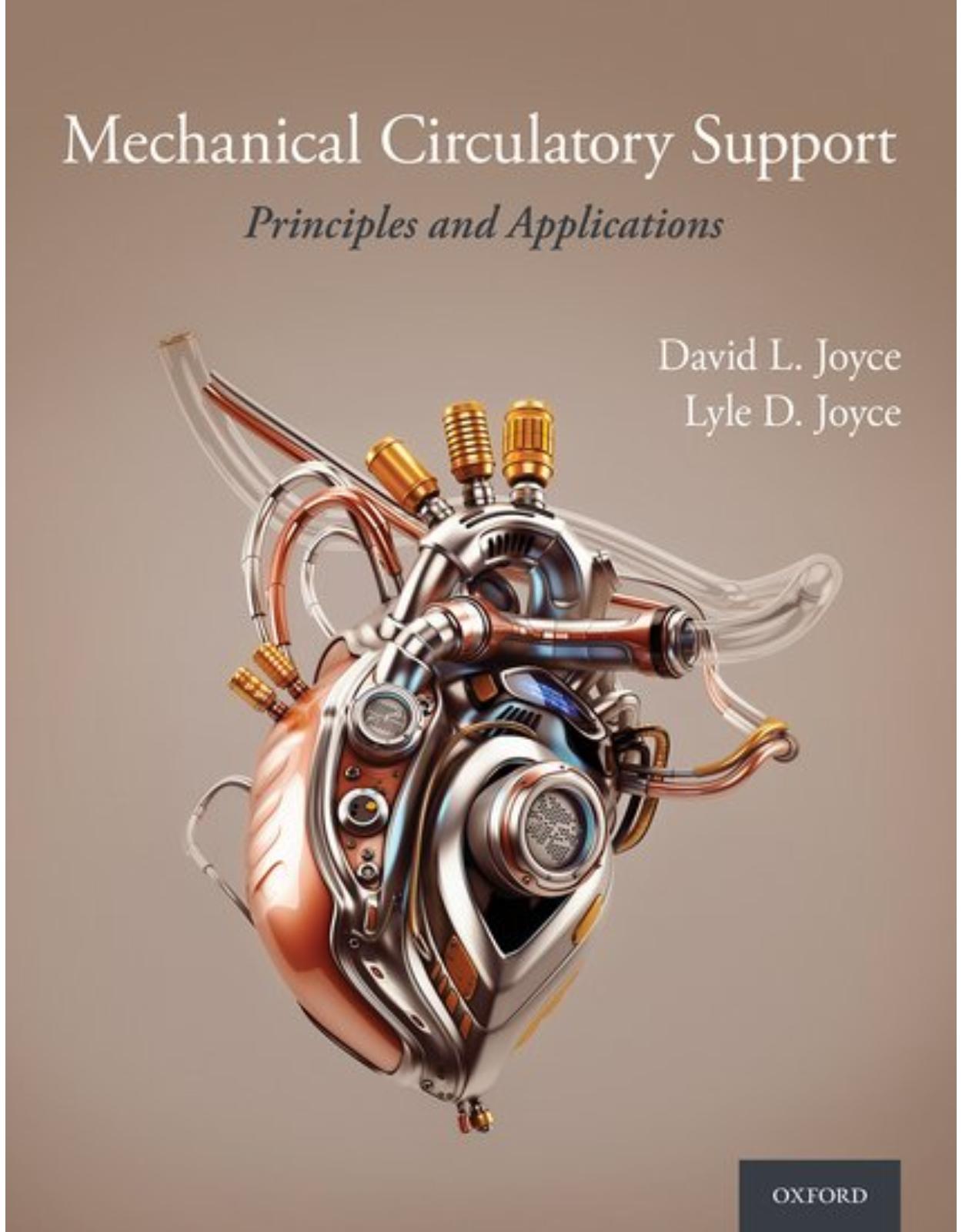
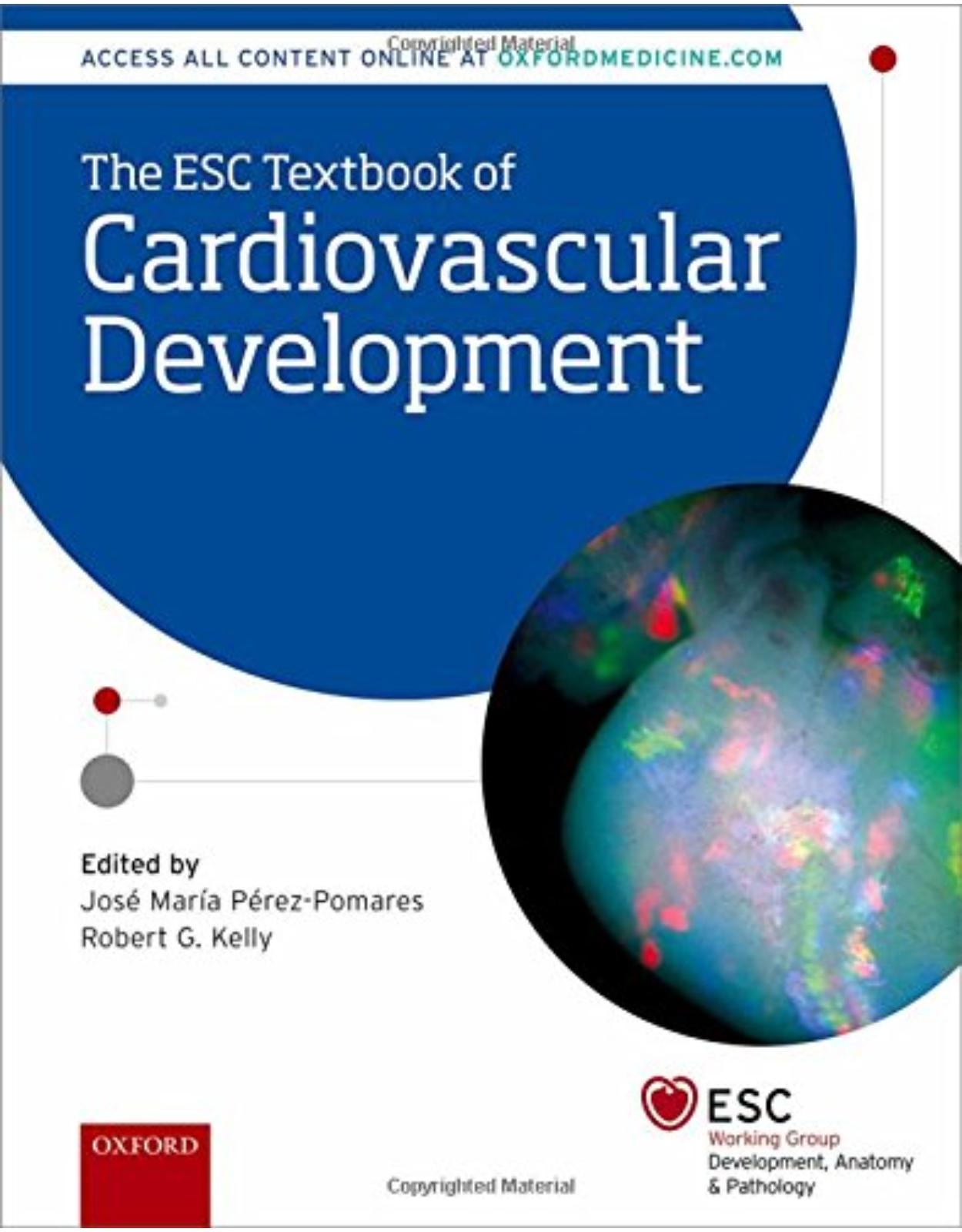
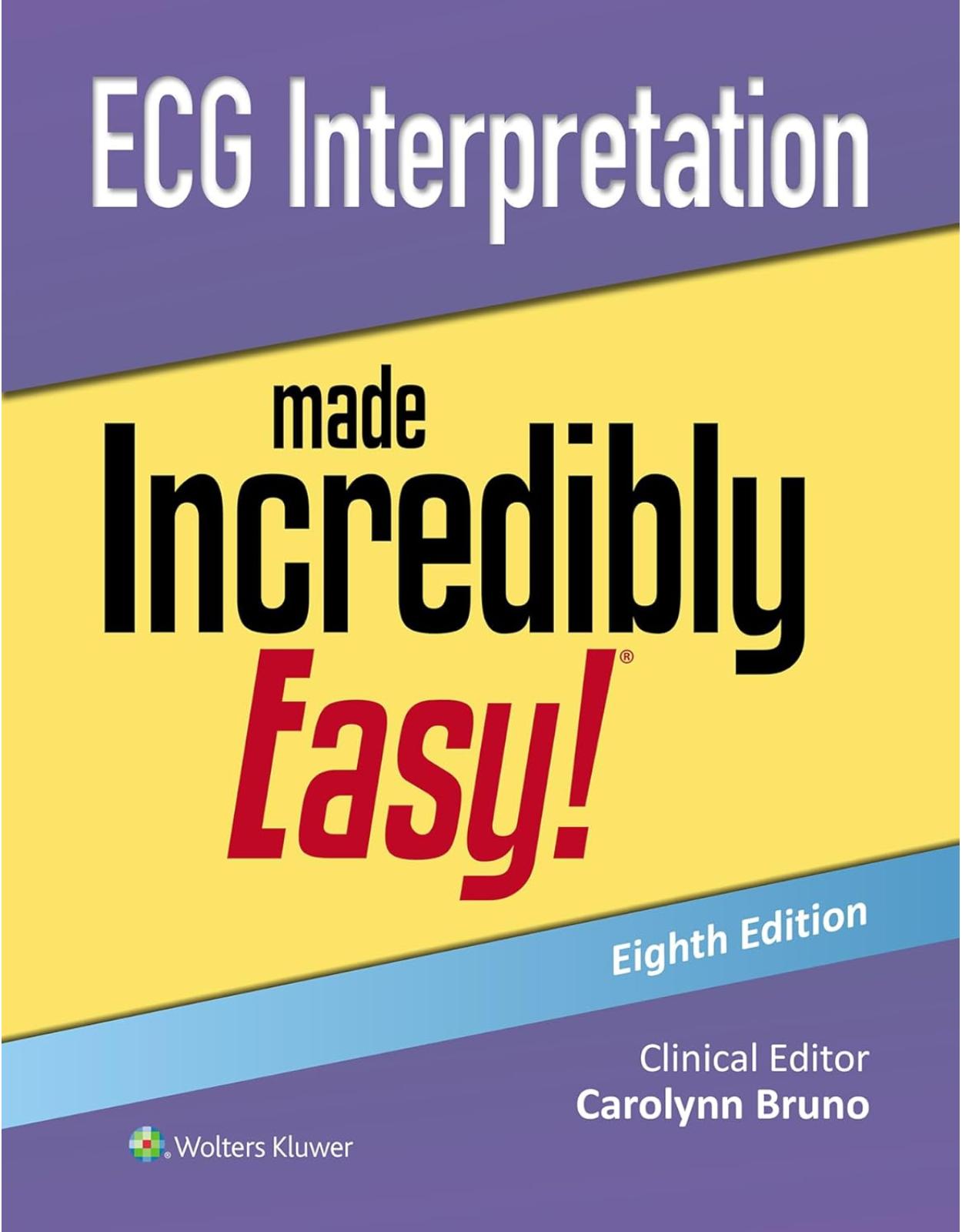
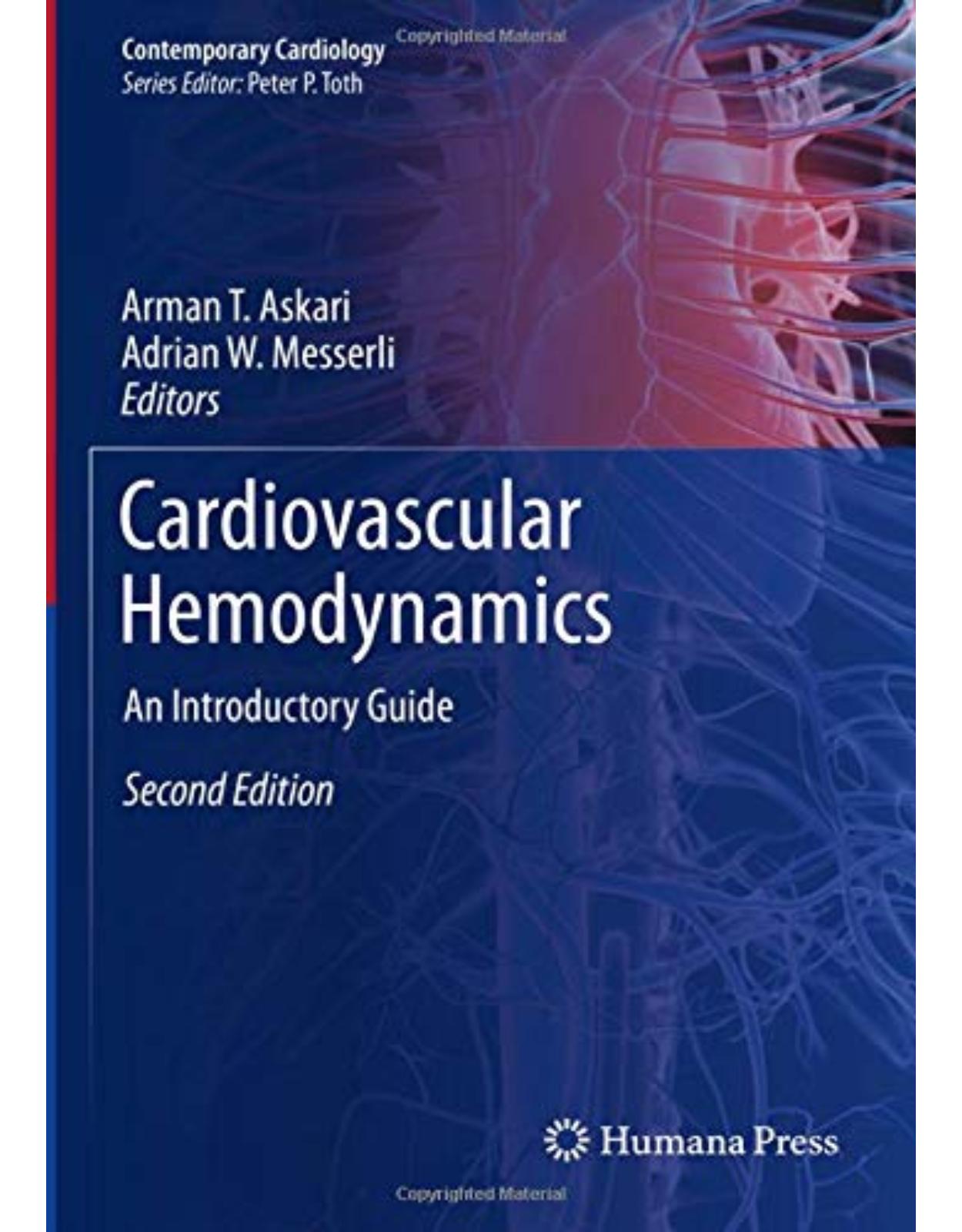
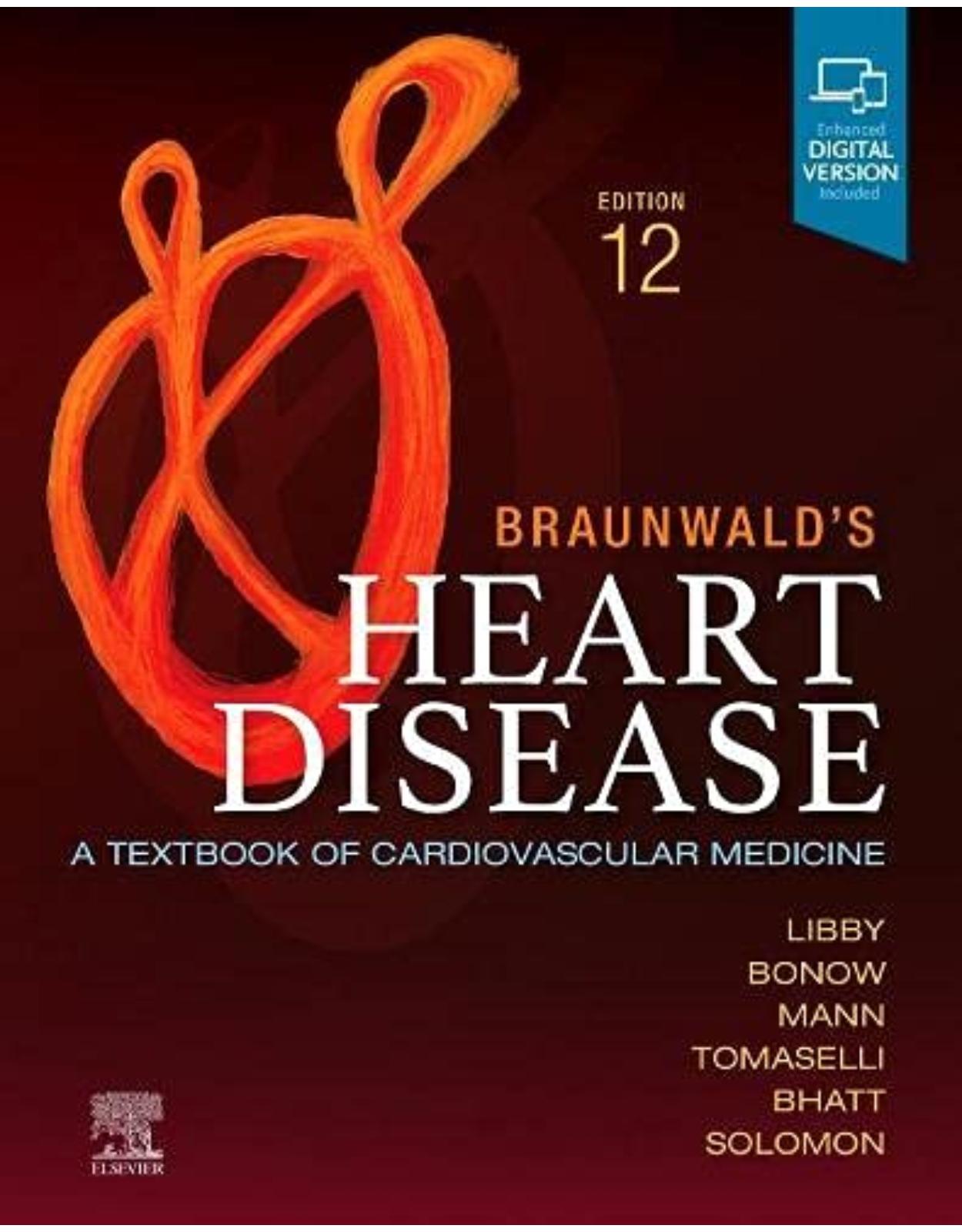
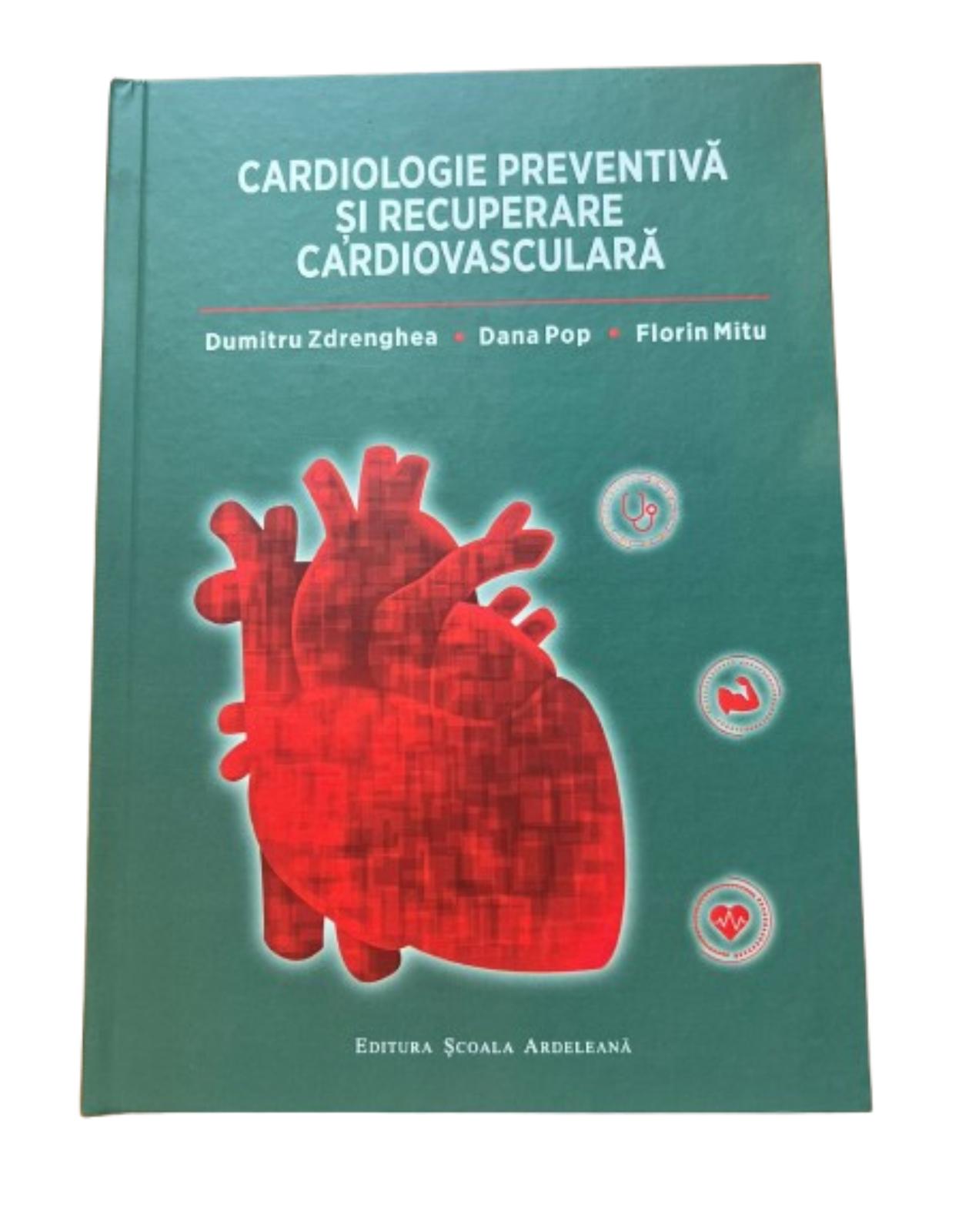
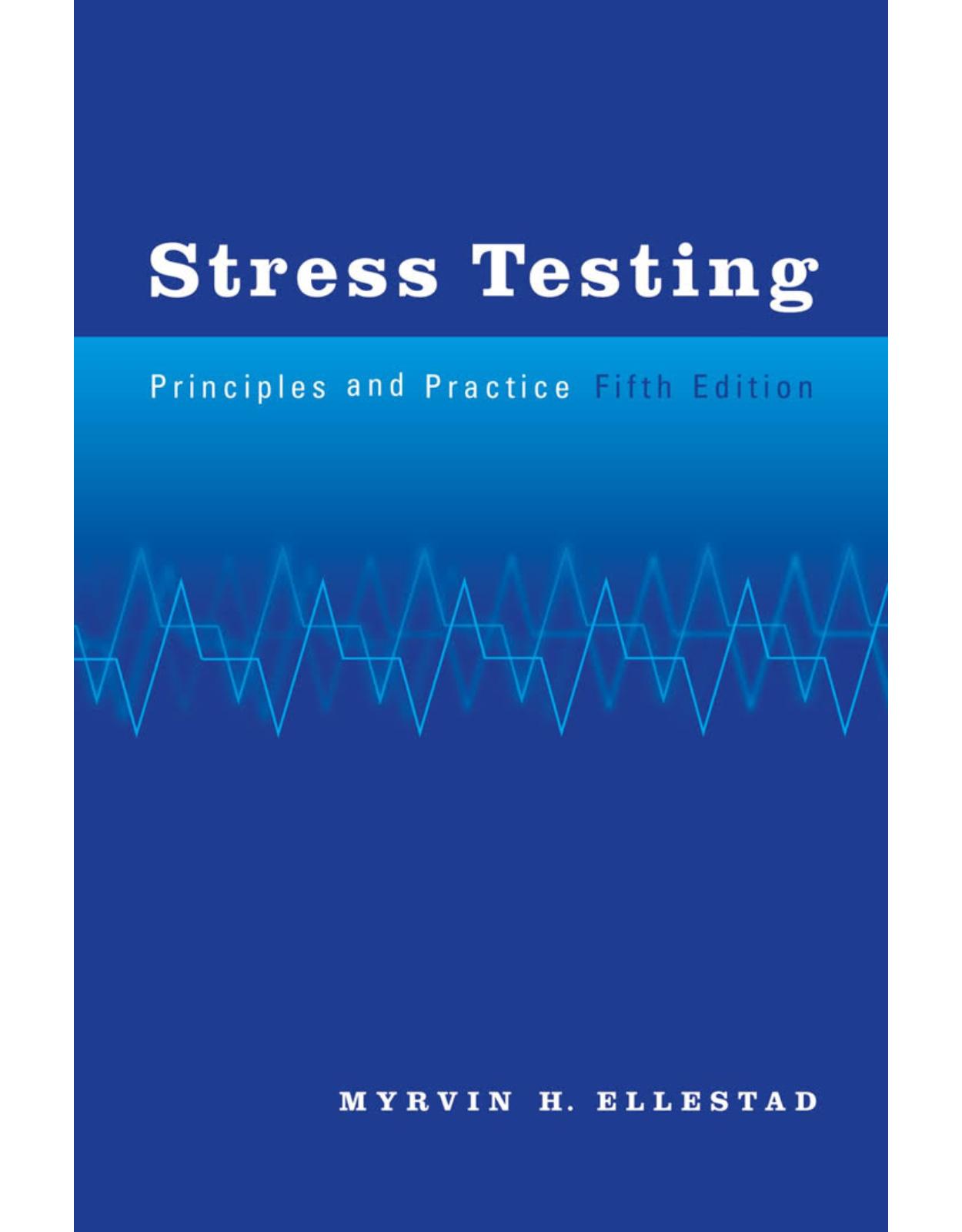
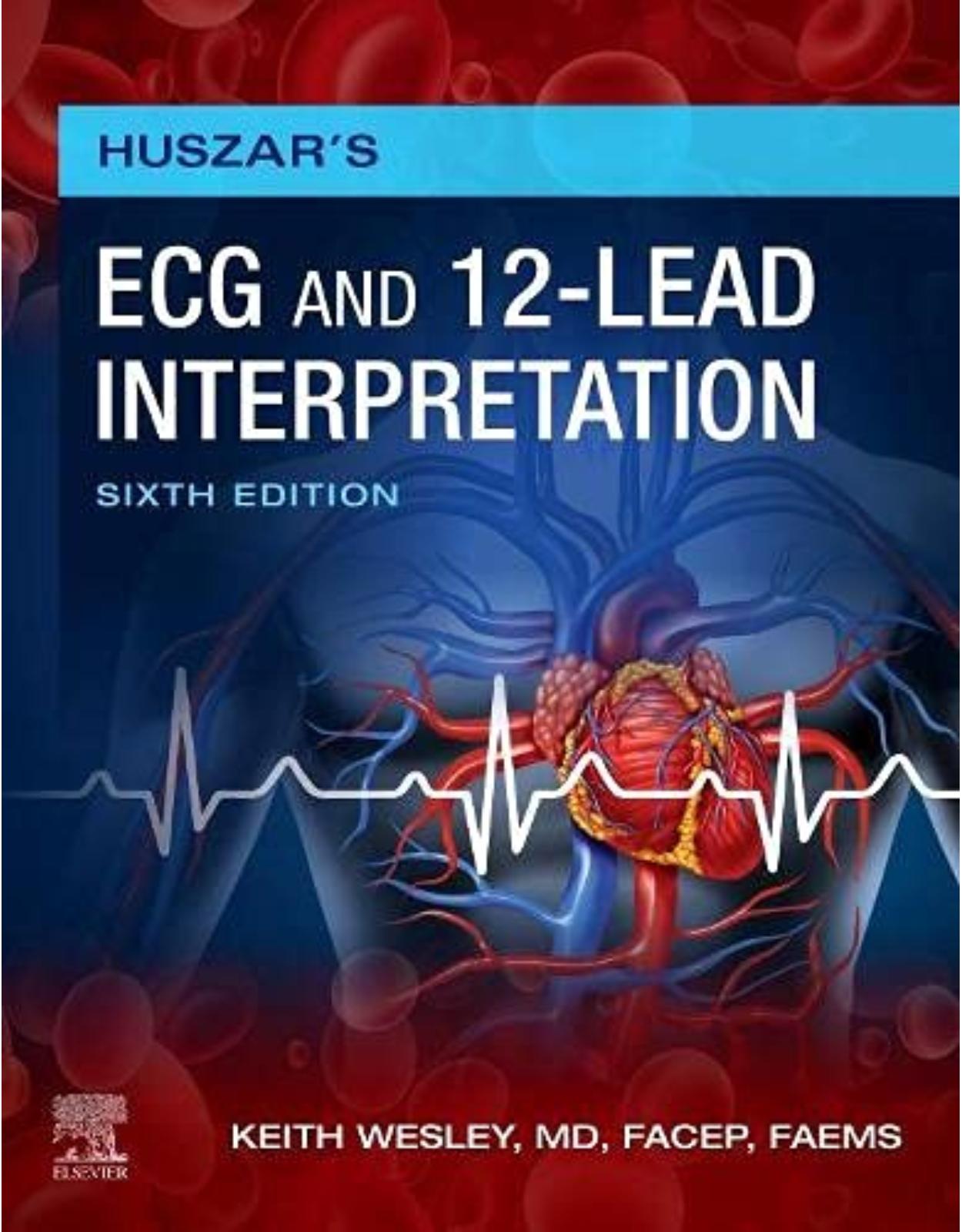
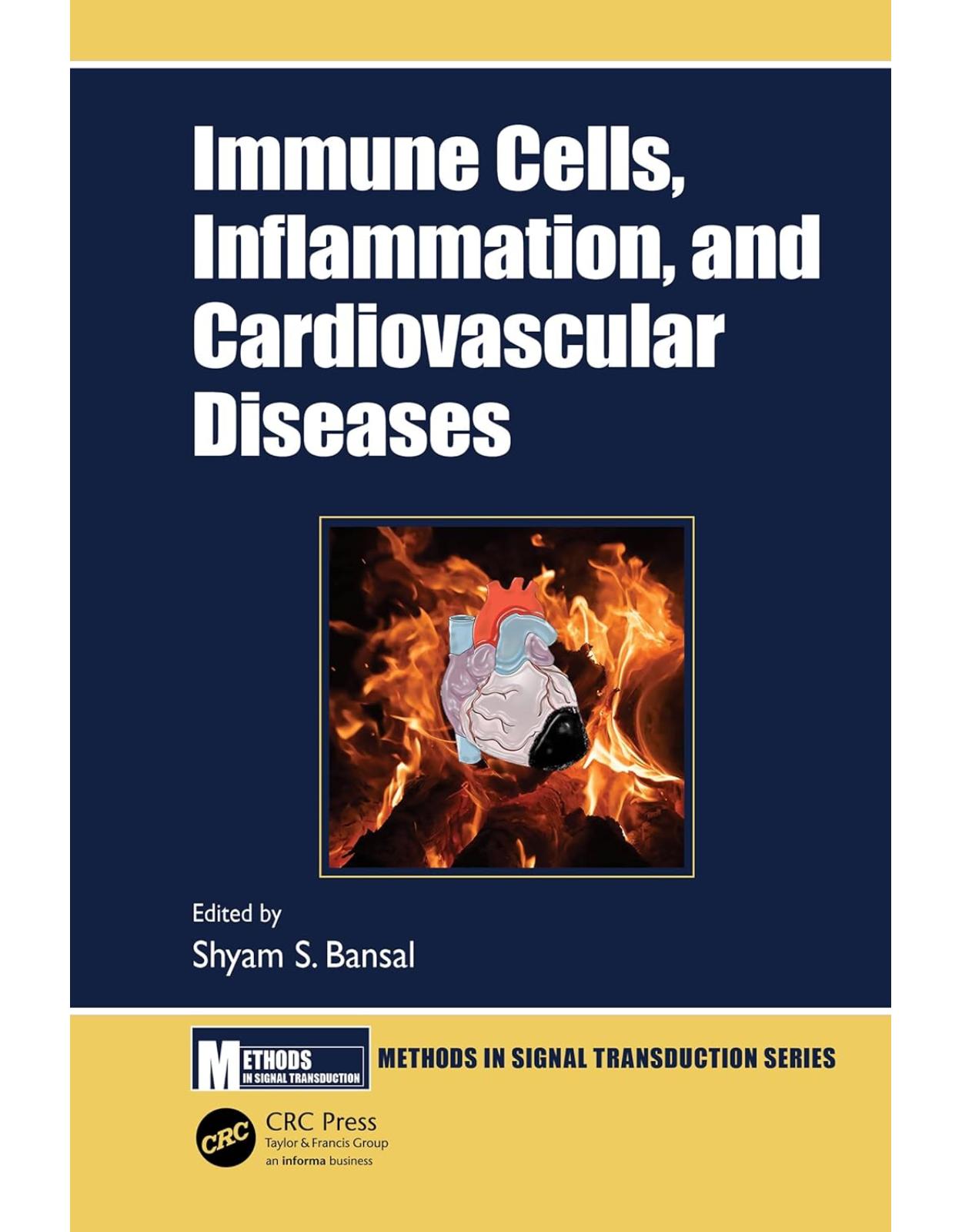
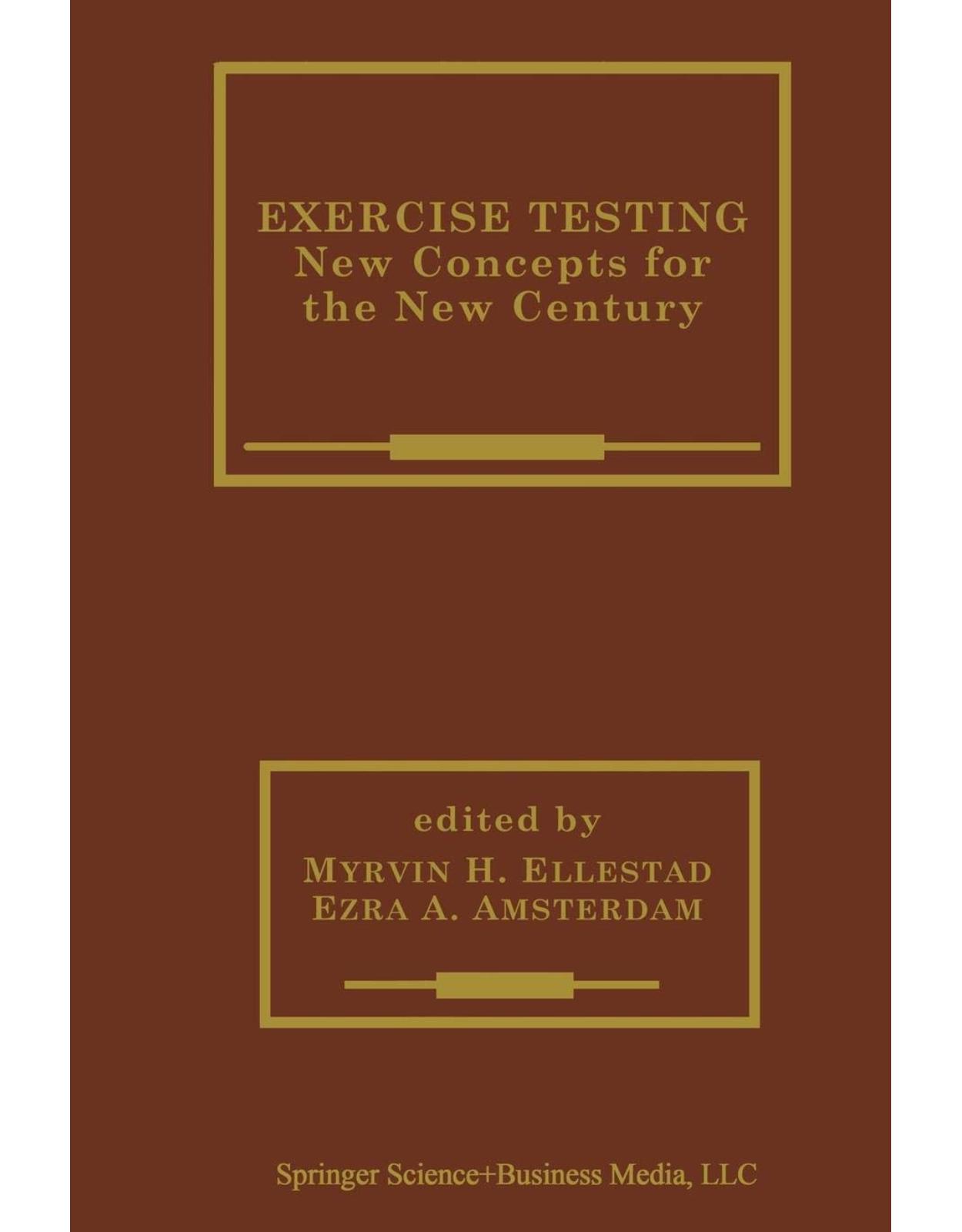
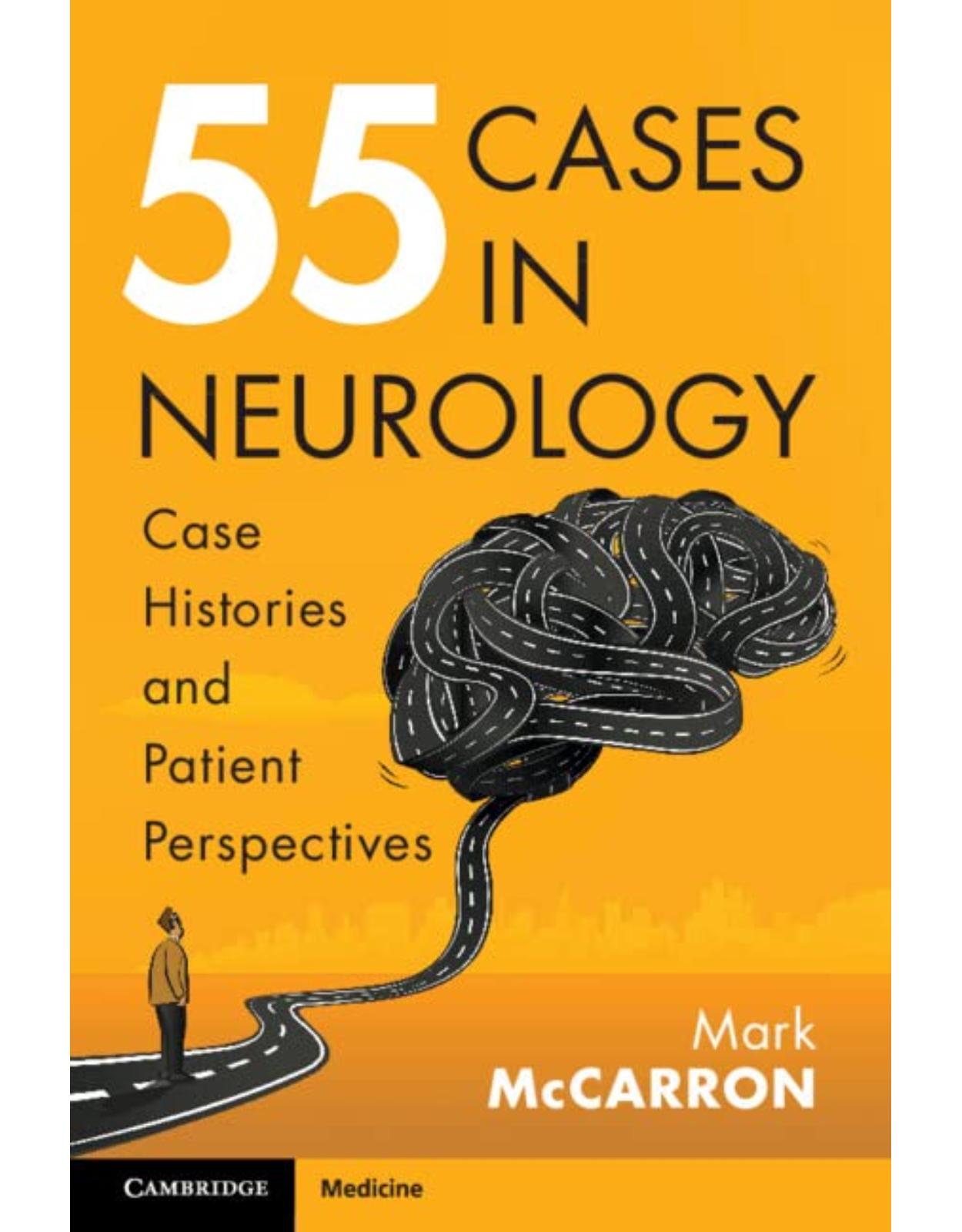
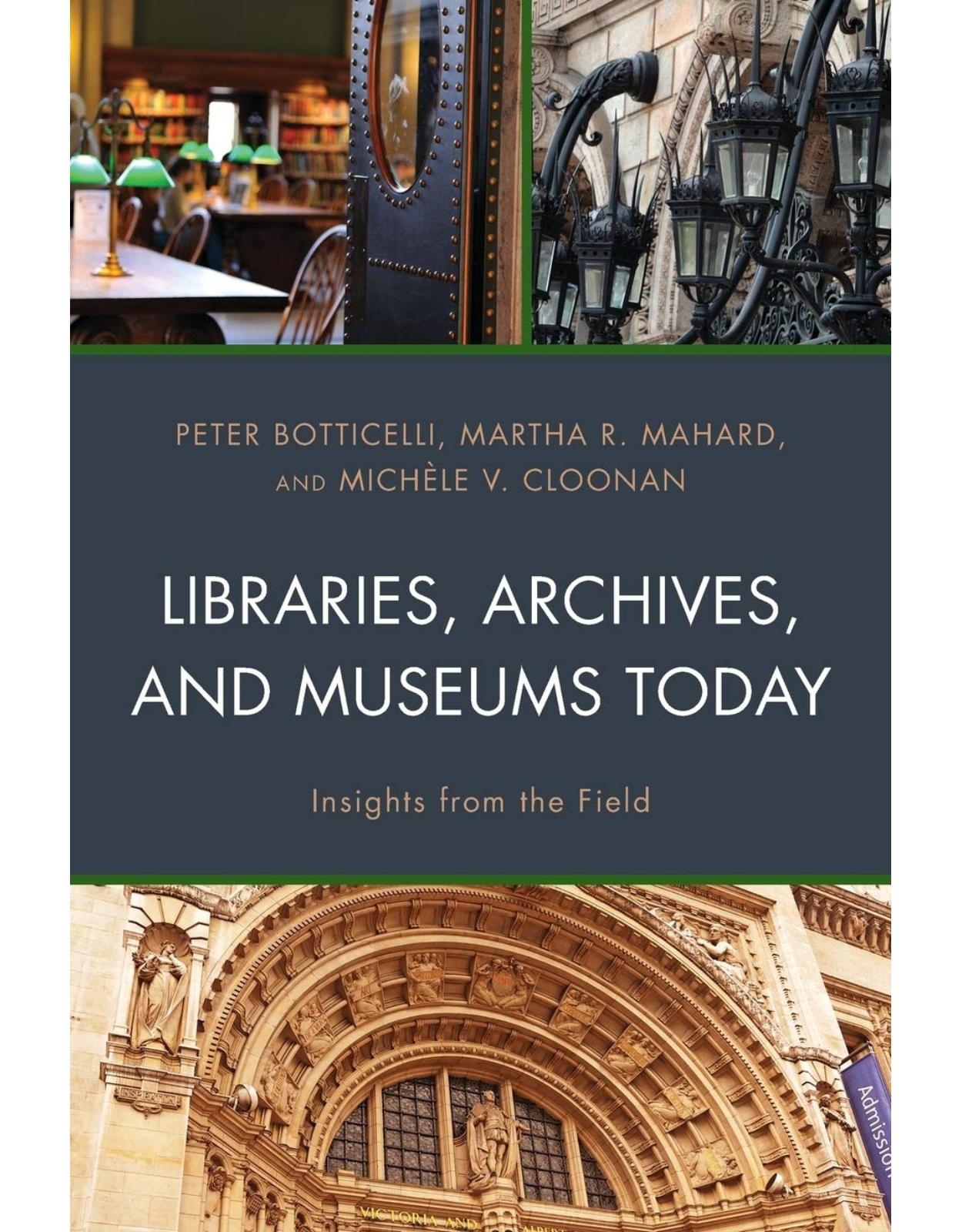
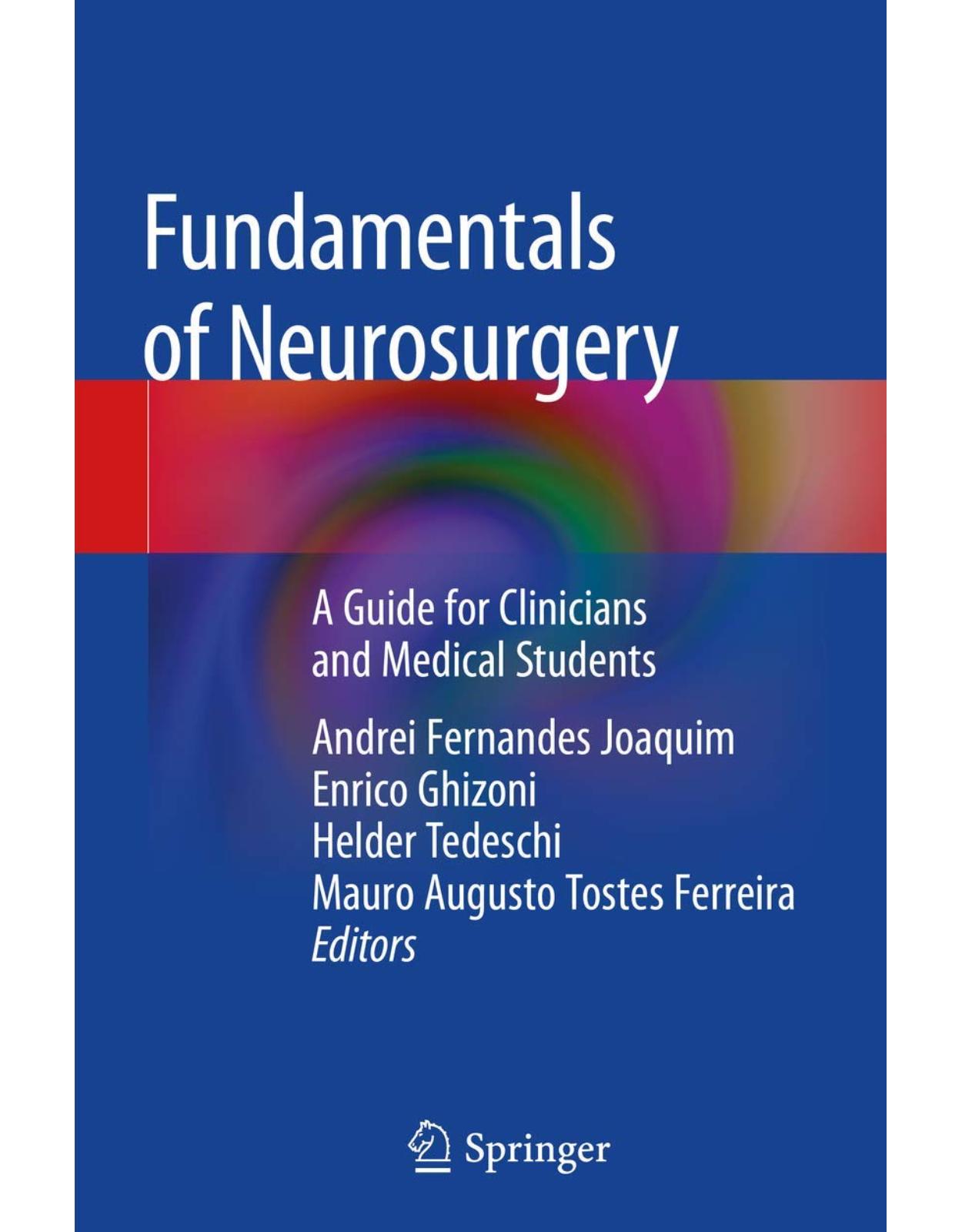
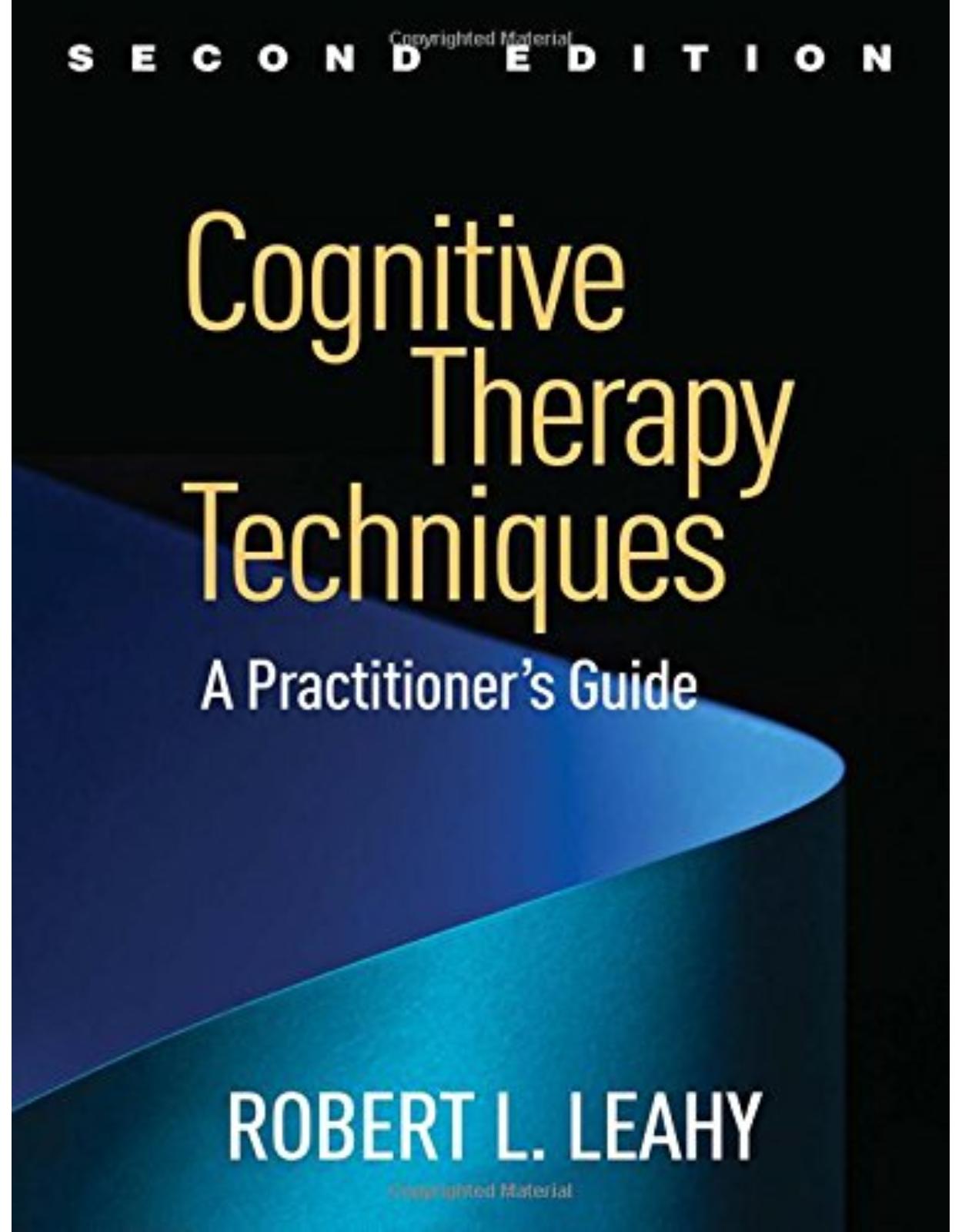
Clientii ebookshop.ro nu au adaugat inca opinii pentru acest produs. Fii primul care adauga o parere, folosind formularul de mai jos.